Travelling to Marrakech? Getting a bit nervous? I don’t blame you! Although I’m an avid female solo traveller, the idea of spending three days by myself in mystic and mysterious Marrakech was simply petrifying. I saw myself wandering mindlessly through narrow alleys, lost between snake charmers and tourist enticers, entangled in 1001 pushy sales pitches, never finding my way back to my Riad.
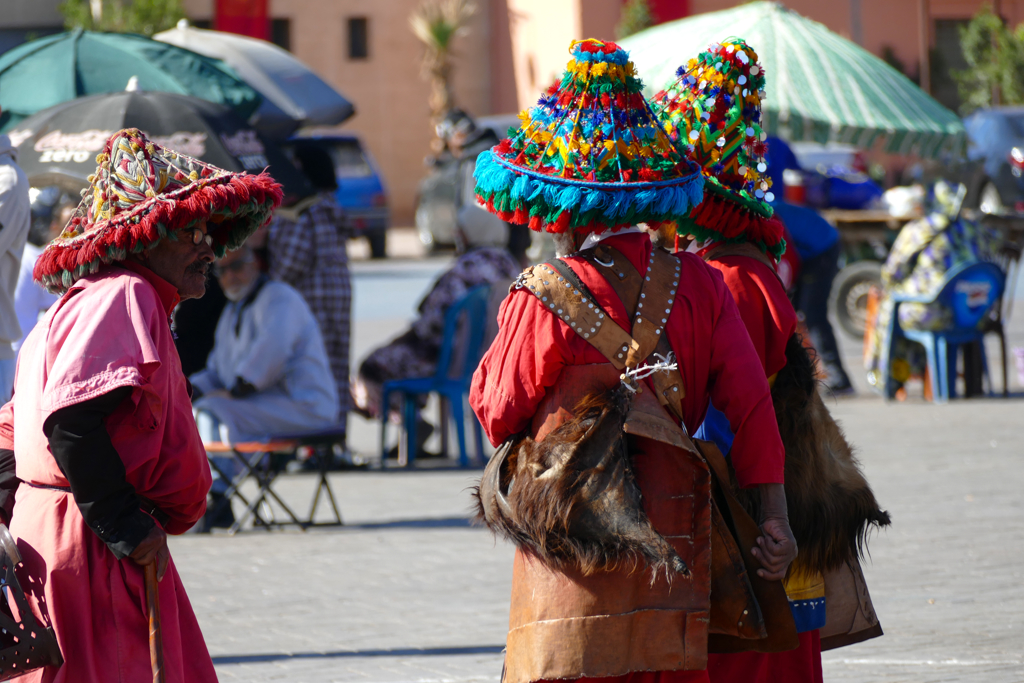
And although Marrakech was actually everything I expected – and even so much more – it did not intimidate let alone scare me. Yes, there were charmers – aiming at snakes and at tourists. But neither were the sellers as pushy as expected nor the alleys as confusing as feared. Did I get lost? Yes, but there was definitely no reason for losing it.
Funky Cold Medina
It’s around eight in the morning and it’s freezing cold. To go to the bathroom, I put on socks. The stone floor, the huge iron door latch, the wooden doors – everything I touch gives me chills. I hurry across the courtyard to the bathroom and back as fast as I can. Back in bed, I wrap myself tightly in the sheets and blankets. It’s Marrakech. But it’s November.
Later, I’m having breakfast at one of the iron-cast tables on the patio of the classic Moroccan Riad Sidi Omar*. It’s the host’s former home that now has guestrooms arranged around an inner courtyard with fruit trees and a tiled fountain. I don’t get why people are booking themselves into hotels in Morocco since these Riads grant you the authentic vibe of this exciting colorful and warm country.
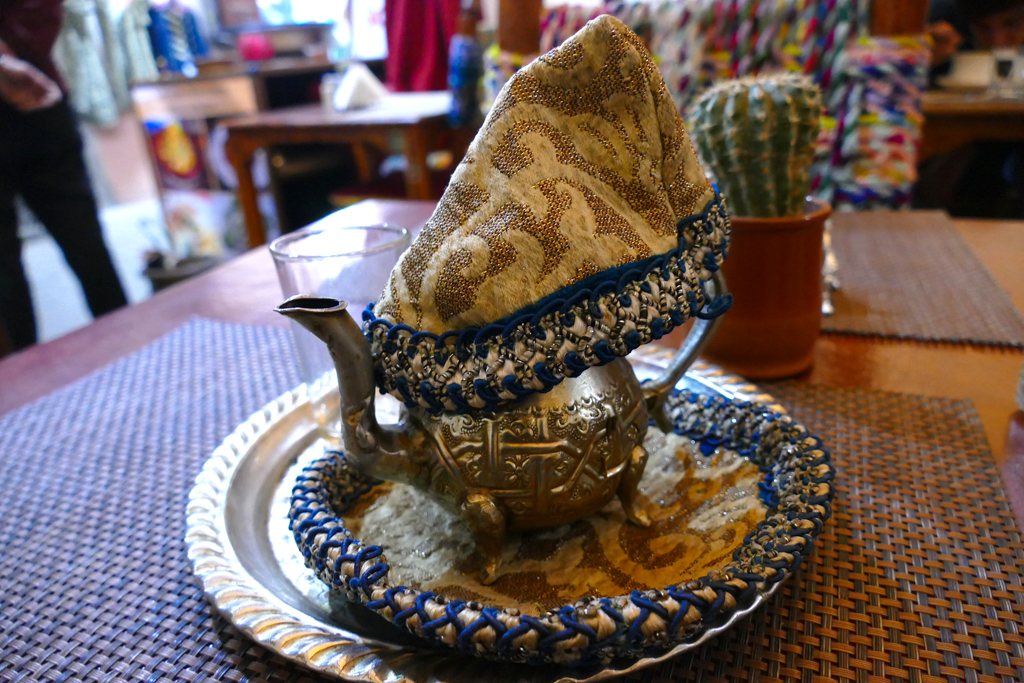
Warm – well, it’s still not warm, so I actually left my pajamas on underneath my pants and sweater. As I look up, I spot a rectangular piece of sky above the courtyard. It’s cloudless and of the bluest blue. It will be a beautiful day. In about two hours, it will be warm. Not hot, it’s winter in Morocco, too. But so warm that I can comfortably walk around in sandals and a dress. But that will be only later. Until then, I have to stand the morning chills of Marrakesh. It’s absolutely crazy how much the temperature differs between the morning hours and the noon and afternoon.
Walking the Alleys of Marrakech
A bit later, I make my way through the labyrinth that leads from the Riad to the Medina’s main street. The city comes to life. I wish the garbage collector with his donkey a good morning, turn around the corner, and find myself in the heart of one of the World’s oldest and most famous souks.
After my weekend in Fez and a couple of days in Rabat, I feel empowered and ready to face the world a Moroccan Medina.
Marrakech’s Medina is different than the one in Fez. There seem to be even more shops catering exclusively to tourists. The vendors are more annoying ambitious, and most importantly, the streets and alleys are broader. Which at first seems to be more comfortable for the many shoppers, has a dangerous downside: Not only are you pushing yourself with countless people over the pavement. No, every couple of seconds, a bicycle or a motorbike or both at a time passes you and I think it’s a miracle that there aren’t constantly terrible accidents happening.
Ups, sorry, I have to interrupt here since I need to jump out of the way as a huge cart full of wooden furniture and pulled by a mule is about to crush me.
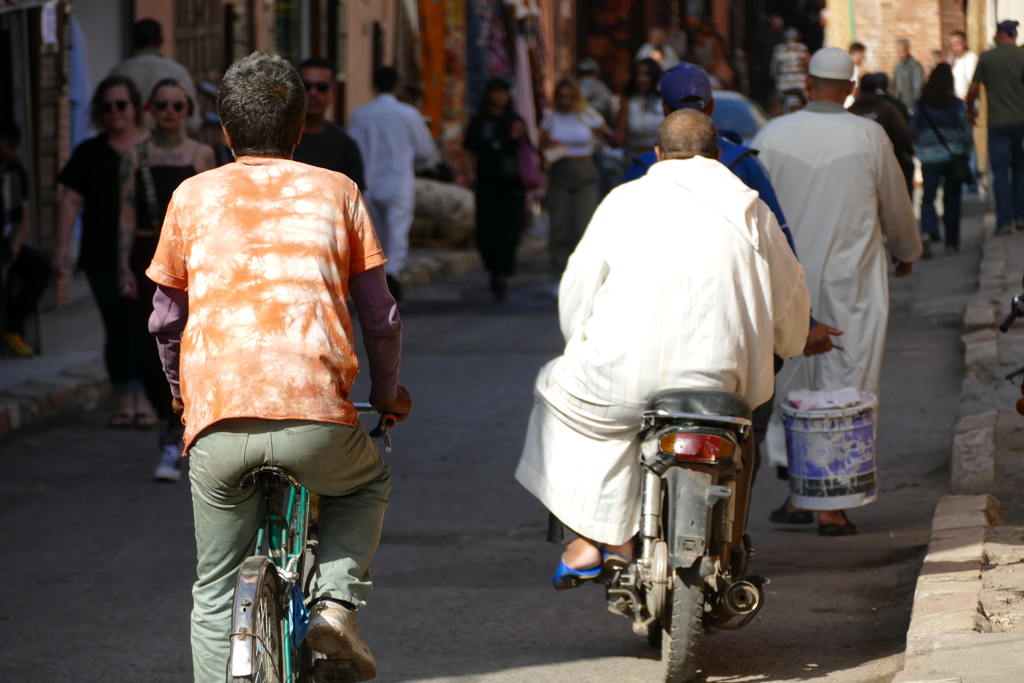
So yes, although the notorious web of alleys is more misleading in Fez, all in all, the vibe is far more laid-back than here in Marrakech.
What Should I Wear in Marrakech?
I’m splitting this question into two parts: Firstly, what’s appropriate, and secondly what’s functional.
Although Marrakech is extremely touristy and those local eyes have seen it all, I’d recommend dressing modestly. You might attract attention by wearing tight shorts, short skirts, and cropped or halter tops, but you certainly won’t gain respect. Dressing like this is simply ignorant in a country where many women don’t leave the house without a Djellaba and their hair covered. Also, don’t think that men can dress as they please. Look around: In cities, you won’t see Moroccan men wearing shorts and tight sleeveless shirts. Hence, don’t be that ugly tourist.
You don’t have to dress like a pious Muslim. Put on a light skirt and a T-shirt or blouse or a long summer dress that covers your knees and shoulders and you’re good to go. Regarding functionality, it’s easy in summer when it’s always hot: Dress light but at the same time modestly. From October to April, it’s not that simple. While it’s warm during the day, mornings and evenings tend to get really chilly.
Although I found it strongly exaggerated seeing women in fur boots in November, you will be more comfortable in sneakers than in sandals. Also, wearing sandals in the souks can be a bit gross, anyway.In the morning and in the evening, you will need at least a sweater and sometimes even a warm jacket. Hence, if you’re planning on spending the entire day on the town, you might want to opt for a soft sweater that you can wrap around your shoulders or waist once the sun comes out. A good alternative should be a foldable down jacket.
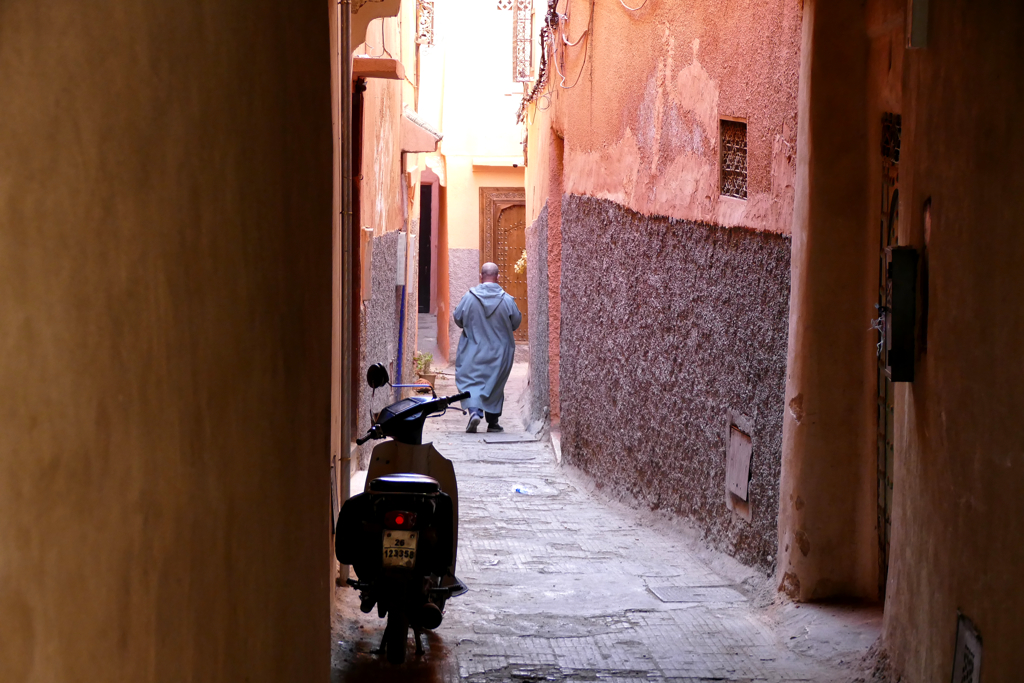
A Little Bit of History
Marrakech is one of the four imperial cities of Morocco, along with Meknes, Fez, and Rabat. Abu Bakr Ibn Umar founded the city as the center of the Almoravid dynasty in 1070. It is nestled in a plain north of the High Atlas.
Abu Bakr’s successor Yusuf Ibn Tashfin then conquered what is now northern Morocco and Andalusia in Spain. Marrakesh became the capital of this powerful empire.

The conservative religious Almohads conquered first northern Morocco and finally Marrakech in the mid-12th century. They destroyed the Almoravids’ religious and secular buildings and built their own houses of worship, like for instance the famous Koutoubia Mosque.
But only about a hundred years later, the Merinids gained power over Morocco in 1269. The leader Abu Yusuf Yaqub moved the country’s capital from Marrakech to Fez.
However, Marrakech temporarily became the Moroccan capital again in 1554 under the Saadian dynasty.
Finally, the Alawids again chose Fez as their center of power until it was moved to Rabat by the French occupants. By the way, today’s Royal family descends from the Alawid dynasty.
The Epitome of 1001 Nights
Marrakech was once an important caravan station. Therefore, the streets and alleys of the old Medina with its souks and residential parts are lined by many historic buildings. The old town, together with the Agdal and Menara Gardens, has been a UNESCO World Heritage Site since 1985.

The main attraction of the city remains the Jemaa Al Fnaa. It’s a medieval market and former executioner’s square. Today, it is a lively place full of stalls and eateries, henna painters, snake charmers, and jugglers. Obviously, this is a spot where you should be on the alert since it’s the ideal surroundings for skilled scammers and pickpockets. Hence, keep your eyes open and your valuables well-secured.
The most fascinating trade is actually traditional storytelling. The tales that those storytellers have told for generations on the Jemaa Al Fna never end. They are a fluid oeuvre of fantastic, erotic, heroic, and comic fiction. The Spanish writer Juan Goytisolo, who lives in Morocco, has campaigned for the recognition and preservation of public storytelling traditions in Marrakech as a public treasure. Finally, since 2008, the storytellers of Marrakech have been part of UNESCO’s Intangible Cultural Heritage.
12 Things Not to Miss in Three Days in Marrakech
There are tons of mesmerizing buildings and places to see, hence, it’s a bit preposterous to recommend only 12 of them. But three days aren’t that much in an exciting place like Marrakech, so everybody will have to prioritize what to see and what to do.
I’m listing what I’ve seen in three days and what I liked best.
Whether you follow my example or if you do something completely different – one thing is certain: You’ll have an unforgettable time in Marrakech.
Koutoubia Mosque
The Koutoubia Mosque is the largest mosque in Marrakech. It dates from the second half of the 12th century, which makes it one of the oldest mosques in Morocco. Right after the conquest of Marrakech, the first Almohad caliph Abd Al Mumin commissioned the mosque on the site of the Almoravids’ palace Ksar Al Hajar in 1147.

The Koutoubia Mosque was finally inaugurated in 1158. At that time, there still wasn’t a minaret. This was added only in 1199. Today, it is the symbol of the city of Marrakech. At night, when it is illuminated, you can supposedly spot it from a distance of around 30 kilometers.
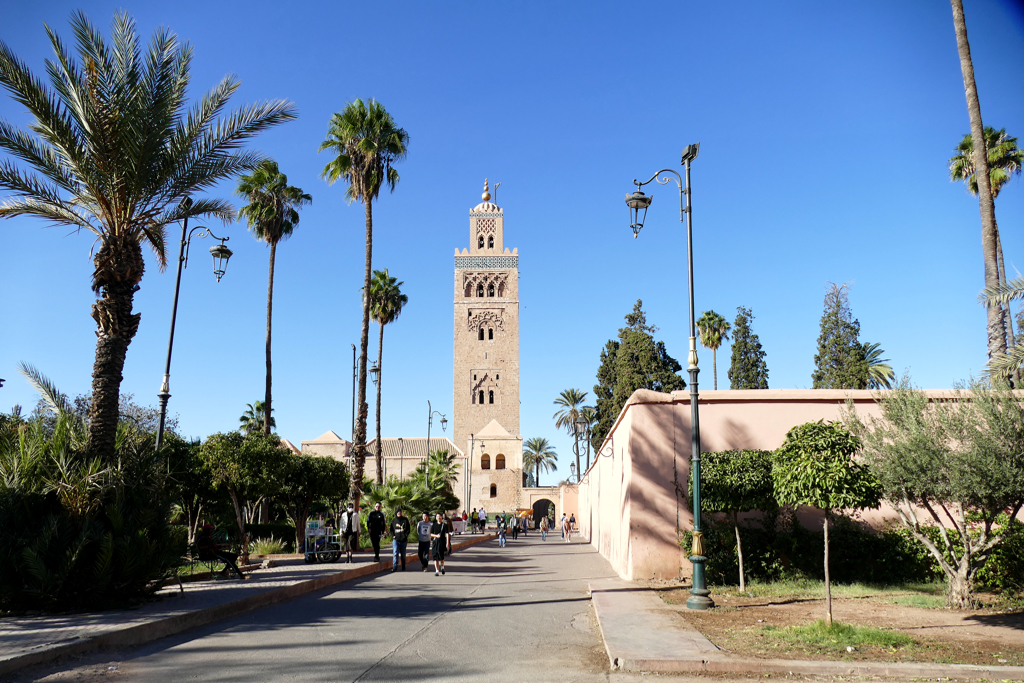
Unlike most Moroccan mosques, the Koutoubia Mosque is a detached structure and not clung to other buildings. Interestingly, it was named referring to the bookseller’s souk only later in its history: Koutoub translates to books in Arabic.
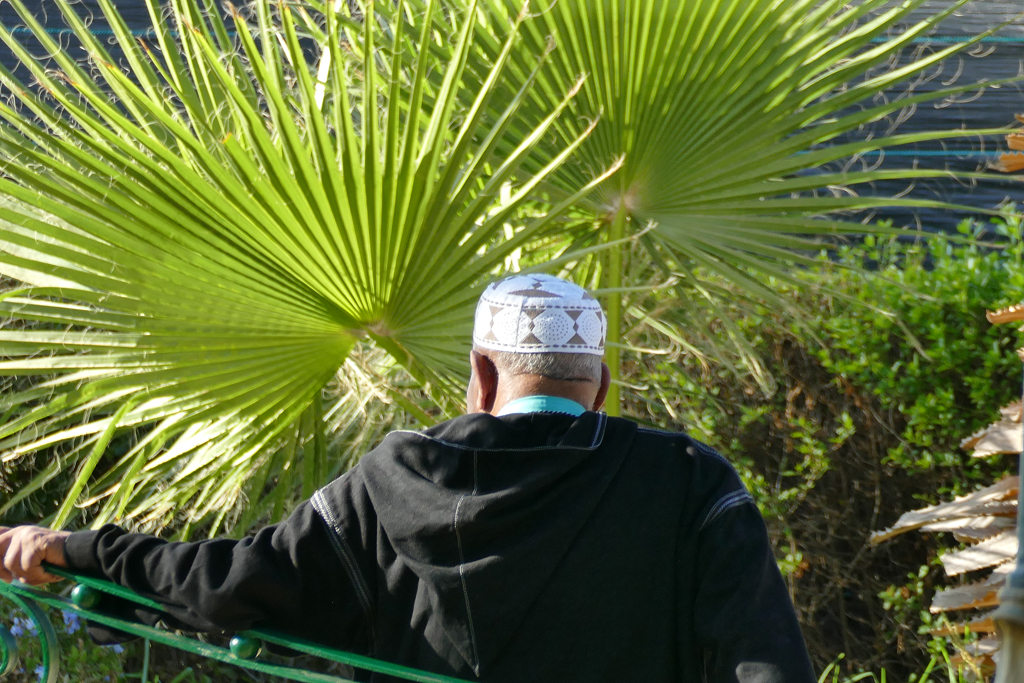
To me, the Koutoubia Mosque was the perfect point of orientation. It stands tall and can be seen from most spots around the Medina. From the mosque, it was only a short walk to my Riad, hence, it prevented me from getting lost in the web of the old town’s alleys. Also, one of the busiest bus stations is in the vicinity of the Koutoubia. It’s as if the Almohads built it to help upcoming generations of tourists.
Why Don’t You Introduce Mosques?
In Morocco, non-Muslims are not allowed to enter any of the sacred buildings. The only exception is the Hassan II Mosque in Casablanca.
Many people mistakenly believe this is due to the Koran. But according to Islamic law, non-Muslims are allowed to visit mosques as long as it’s not during prayer time. Also, they have to stick to the proper decorum, obviously. Enforcement of this law varies greatly from country to country: While for instance, in Egypt and Turkey, anyone can enter a mosque, it is strictly forbidden in Saudi Arabia.
In the special case of Morocco, it was the French occupying forces who prohibited Europeans from entering mosques. They were keen to maintain a strict separation between the native Muslims and the French. Although Morocco is no longer a French colony, this law is still in force.
Jemaa Al Fnaa
The Jemaa Al Fnaa is the world-famous square in the center of Marrakech’s Medina. While today, the fun on the square doesn’t seem to stop, its name stems from a more sinister era. In Arabic, Jemaa Al Fnaa means gathering of the dead. This cute nickname refers to the Almohads using the site for executions. Eventually, they displayed the impaled heads.
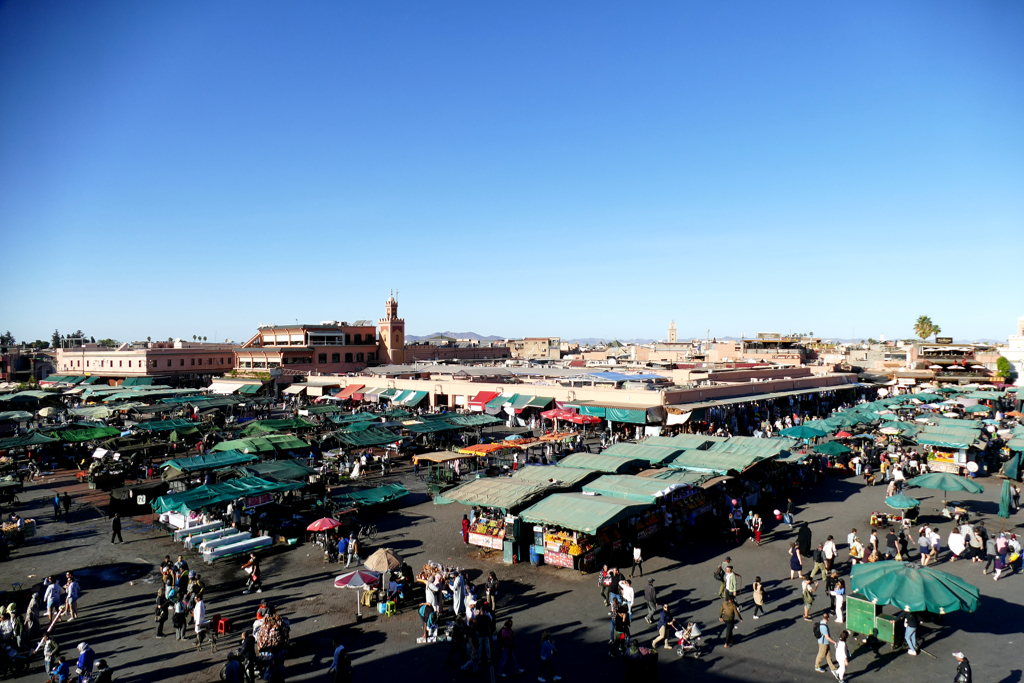
Today, this is not common practice anymore. Nevertheless, the square is always packed with people, and the noise, the smells, and all the brouhaha could easily distract you. Keep your senses sharp and your belongings close to you.
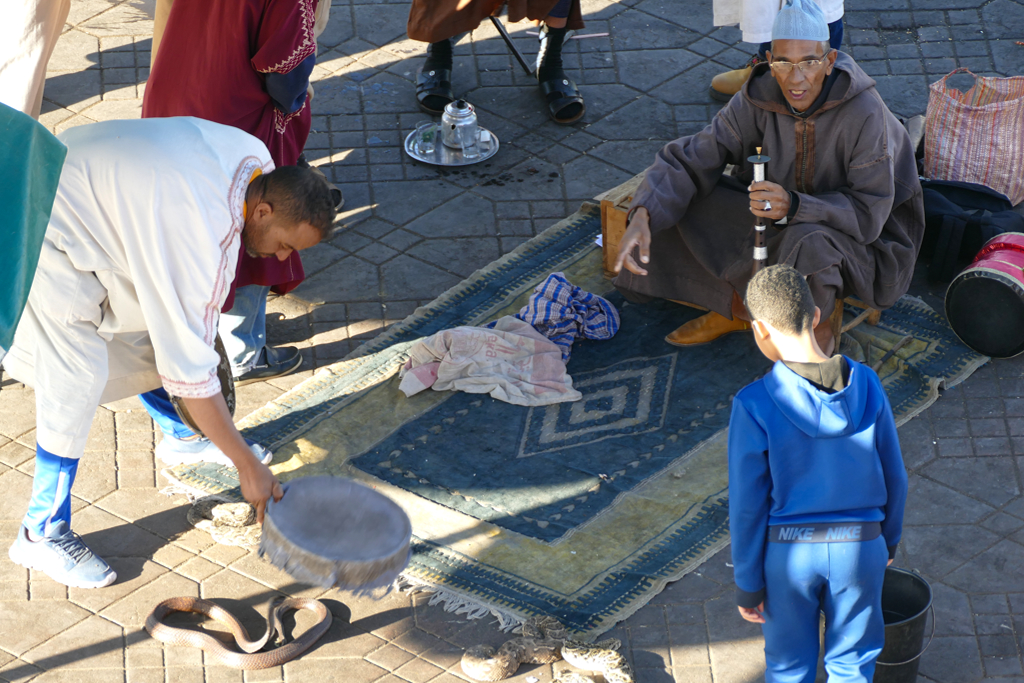
Obviously, the square is particularly mesmerizing after dark when all the stalls are illuminated and countless food stands offer amazing local delicacies.
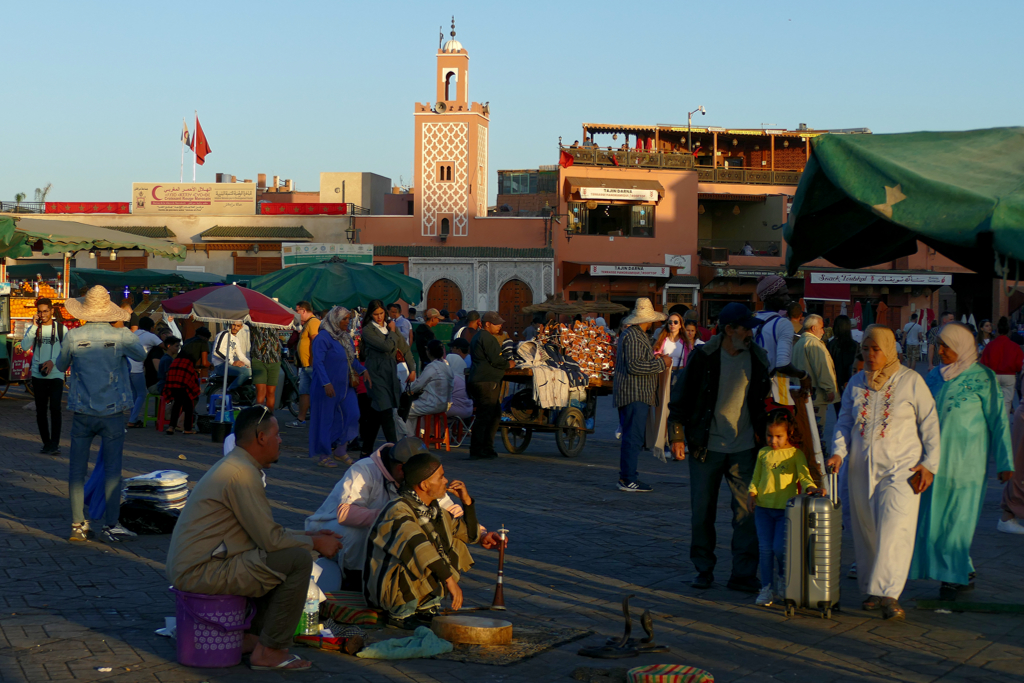
While the jugglers, fortune tellers, musicians, real and fake artists, as well as the storytellers -who are now on the list of UNESCO’s intangible cultural heritage – are fascinating’n’fun, I really, really don’t like the shows that involve animals. And not only the poor monkeys on chains break my heart. I also cannot stand the idea of how the snakes are tortured to entertain visitors.
Is it Djemaa El Fna or Jemaa Al Fnaa?
Well, obviously, this is a transcript from Arabic. I prefer the spelling with a J because I find it looks better. Honestly, that’s the only and very personal reason. The second A at the end of Fnaa – respectively a letter that sounds very similar to A – is actually there, hence I spell it according to the Arabic original.
Regarding El or Al: In Arabic, there is only one vowel for both, the letter A as well as the letter E, hence, it’s totally up to you which one you use for your transcription. I personally prefer Al since the actual pronunciation is closer to A than to E.
Howsoever, none of these versions are wrong.
Souks
I’d argue that the so-called Souks are the quintessence of oriental life. Although in the most touristy cities like Fez and Marrakech, it degenerated from an exuberant market to an in parts a bit scammy tourist attraction, at its core, it still preserved its oriental charm. Come on, even if you detest shopping and cannot stand pushing through crowds, a visit to Morocco and particularly to Marrakech wouldn’t be complete without the rat race through the souks of the Medina.

Interestingly, an original souk is divided according to trades. Traditionally, the so-called pure goods, such as clothes and groceries, are in the center. Around them are the unclean trades such as butchers, leather vendors, and blacksmiths. Scrap dealers, moneylenders, snake charmers, shoe shiners, and other outcasts remained on the outskirts. I still cannot wrap my head around the concept that each trade is concentrated in a certain area, since this way, the sellers have all their immediate competition right next to them. But hey, it seems to have worked like this for centuries, who am I to doubt?
As Times Go By
This order is basically nullified in the more touristy parts of the souks, anyway. Here, you have a hotchpotch of leather goods, ferronnerie, ceramics, herbs and spices, jewelry, and knick-knacks not only from Morocco, but also from Sub-Saharan countries such as Mali, Mauritania, and Senegal.
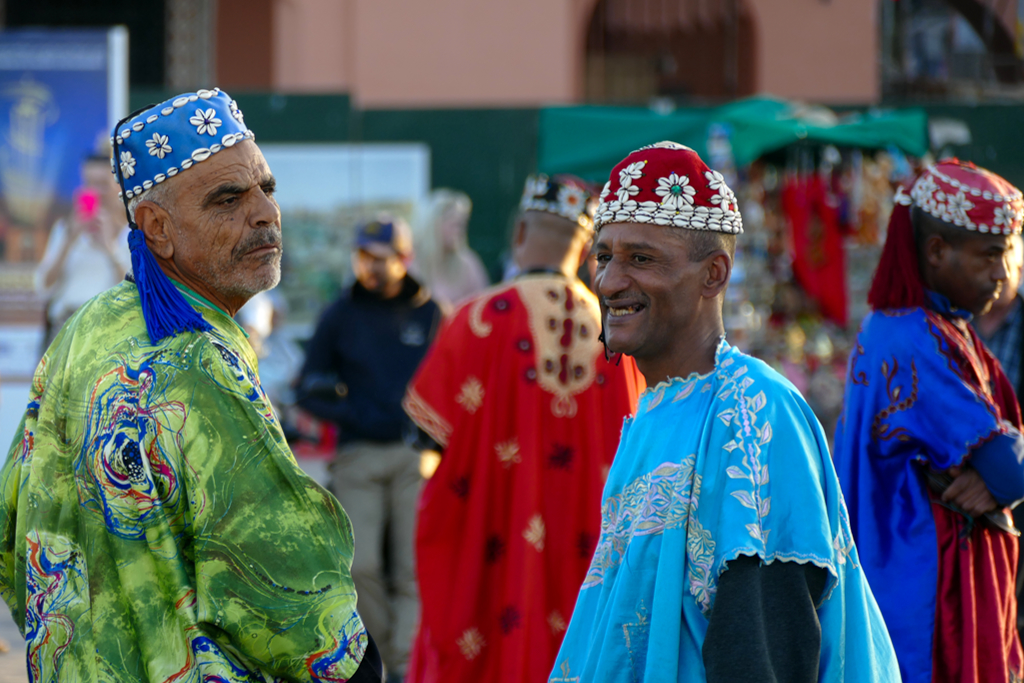
While in the big cities, the souks consist of established businesses and are open every day, in Morocco’s rural area, the souk is usually still a weekly market. There, the market is not only a shopping opportunity but a social event. Also, barter deals between goods and services are still quite common in the countryside.
The Art of the Deal
To my chagrin, haggling and bargaining are vital parts of the shopping experience. Although I’m not even bad at it, I really hate it. But what the heck, when in Rome Morocco….am I right?!
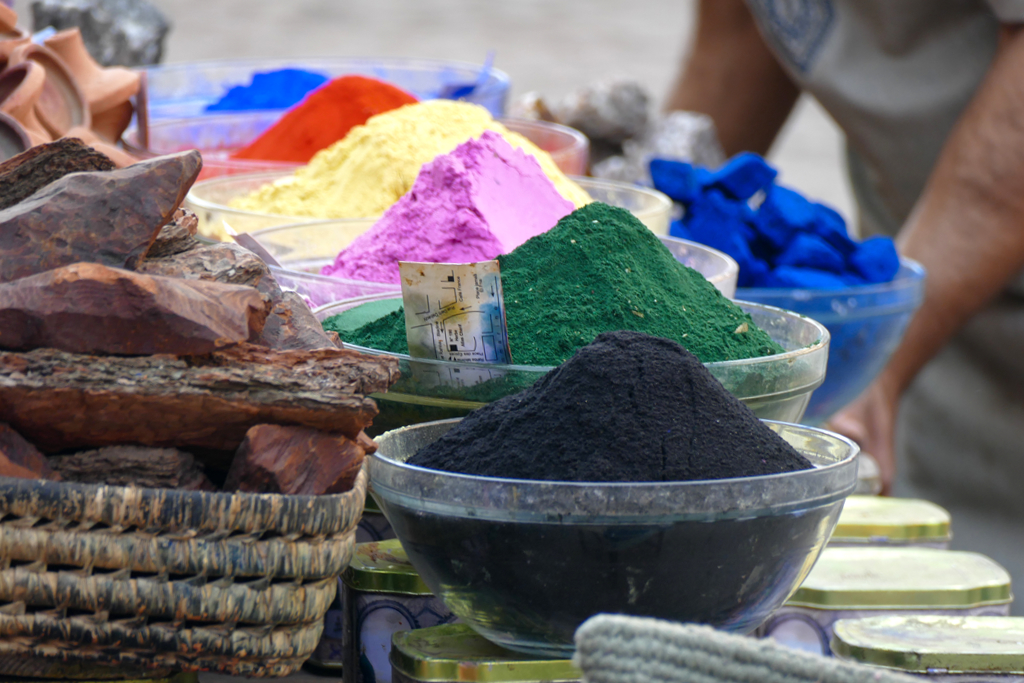
Haggling is a game, and you should play it courageously. The rule of thumb is to negotiate the first quoted price about one-fifth down. At this point, the actual art of bargaining only begins. Your goal should be to pay less than half of the originally quoted price.
If the procedure takes too long, you can just prepare to walk away. In case the trader is then quoting lower prices or doesn’t want to let you go, there’s still something in for you.
However, in big touristy places like Fez and Marrakech, the traders lost their swag. You actually cannot bargain that much since they are not under pressure to sell their stuff to you. The next tourist is just around the corner, so why bother? Nevertheless, never accept the first price – you should pay at least 20 percent less.
You Get What You Pay For
Obviously, it is advisable to look carefully, to compare qualities, as well as prices, especially if you’re about to buy something more costly. Also, it makes a lot of sense to ask at the reception of your riad or hotel about the approximate prices before you head out on your shopping spree.
If prices are written on the goods, they are non-negotiable. However, they can be a great reference for your bargaining.
Nevertheless, foreigners always pay more than locals, which is kind of okay since they earn about 10 times more than Moroccans.
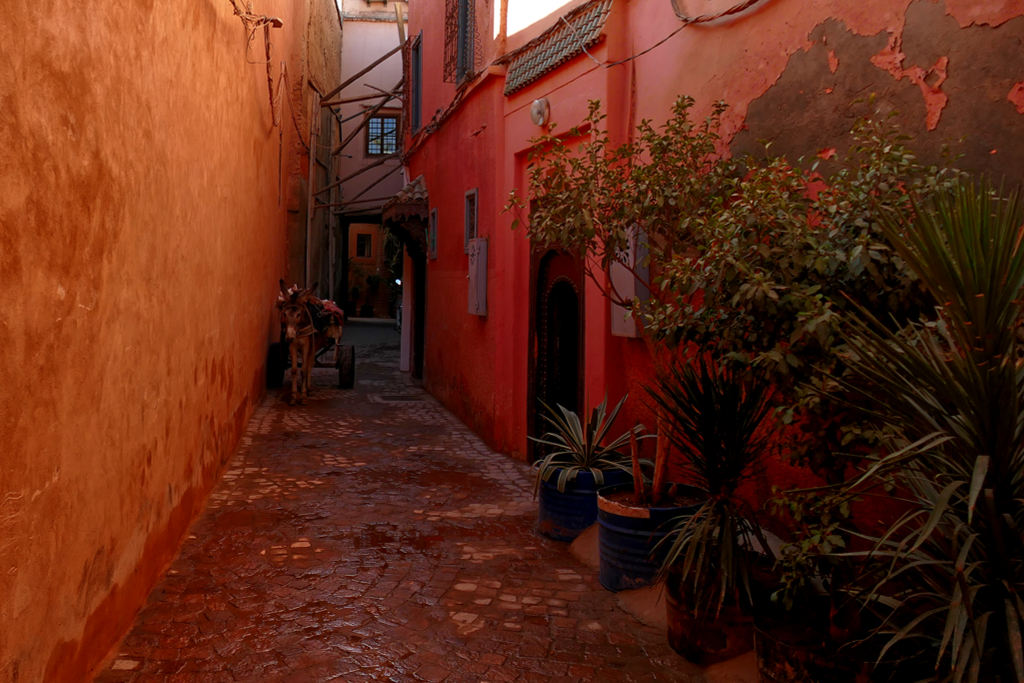
In general, prices are lower in the souks farther from the Jemaa Al Fnaa in the more secluded side streets, as fewer tourists venture there. Also, you’ll probably pay even less in neighborhoods where tourists are fewer, for instance, in the Jewish quarter of Mellah.
And the last tip: Beware of touts who will drag you to a certain shop. Oftentimes, those businesses do not necessarily sell the best quality, and at the end of the day purchase, the tout’s commission will be discreetly added to the price.
I personally don’t enjoy shopping in the first place, and I find bargaining in markets so tiring. Also, the oversupply in oriental markets results in buyer’s block: I’m probably the only person on earth who comes back from Morocco’s markets empty-handed.
So Where to Shop?
If you are into shopping and you enjoy digging through garments and pieces of jewelry and trying on sandals and sampling local delicacies – good for you! Go for it, Morocco’s souks will be your Dorado.
Nevertheless, if you are like me and want to be sure to get certain goods of better quality, you just hit the local supermarket. For instance, the Moroccan chain Marjane has stores all over the country. Four of them are in Marrakech. Shopping at the Marjane supermarket is certainly not the most exotic experience. However, it’s very authentic in its own way, since real locals are shopping here.
However, I’m not going there for the authentic experience. I go there to buy spices, dates, and sweets which they pack in a clean atmosphere in clean containers. They are fresh and of far better quality, no one sneezed on them, and I can store them at home forever. Oh, and most of the time, they are way cheaper than in the souk, too.
I even bought pure argan oil and some argan cosmetics at Marjane. To be honest, I rather trust a soulless supermarket chain to bottle pure argan oil under hygienic conditions than a trader in a colorful souk stall.As I said, just an idea.
Musée de la Photographie
The Maison de la Photographie de Marrakech was installed on the initiative of Hamid Mergani and Patrick Manac’h in 2009. Their main goal was to show the extraordinary geographical, ethnic, and cultural diversity of Morocco.
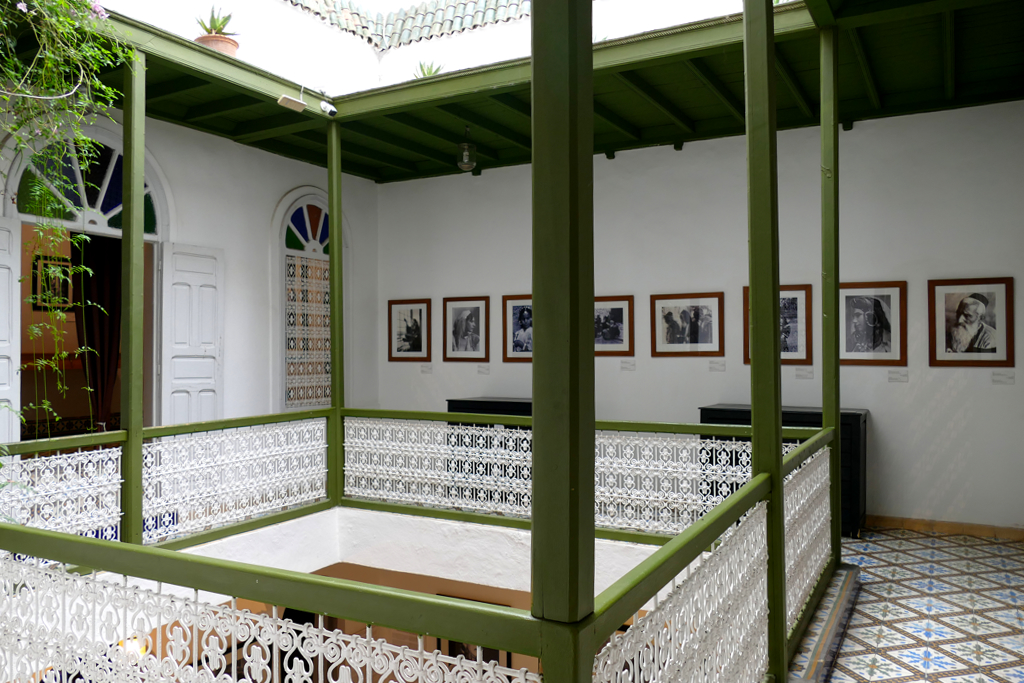
On display are photographs by anonymous as well as world-famous photographers, all the way from the beginnings of photography to the modern times of Morocco.
As you work your way up the floors, you finally get to the rooftop where there is a cozy little café and from where you have – yet another – wonderful view of Marrakech and its surroundings.
I like the museum, yet do I find the hype around it a bit exaggerated. Also, if you plan on visiting the Al Badi Palace, you’ll get to see a gripping photo exhibition in the basement. Hence, if you don’t find the time to pay the Musée de la Photographie a visit, don’t sweat it.
The Musée de la Photographie opens its doors every day at 9.30 a.m. and closes at 6 p.m. The general admission is 50 Dirhams.
Jardin Secret
Not far from the Musée de la Photographie is the so-called Jardin Secret, hence, the secret garden. It’s such a Moroccan classic since this little piece of architectural paradise is hidden behind a high and totally austere wall.

The complex dates back to the second half of the 16th century when the Saadian rulers commissioned the urbanization of what is now the Mouassine neighborhood. Together with many other buildings in Marrakech, the palace, which stood on the grounds of Le Jardin Secret, was destroyed after the downfall of the Saadians.
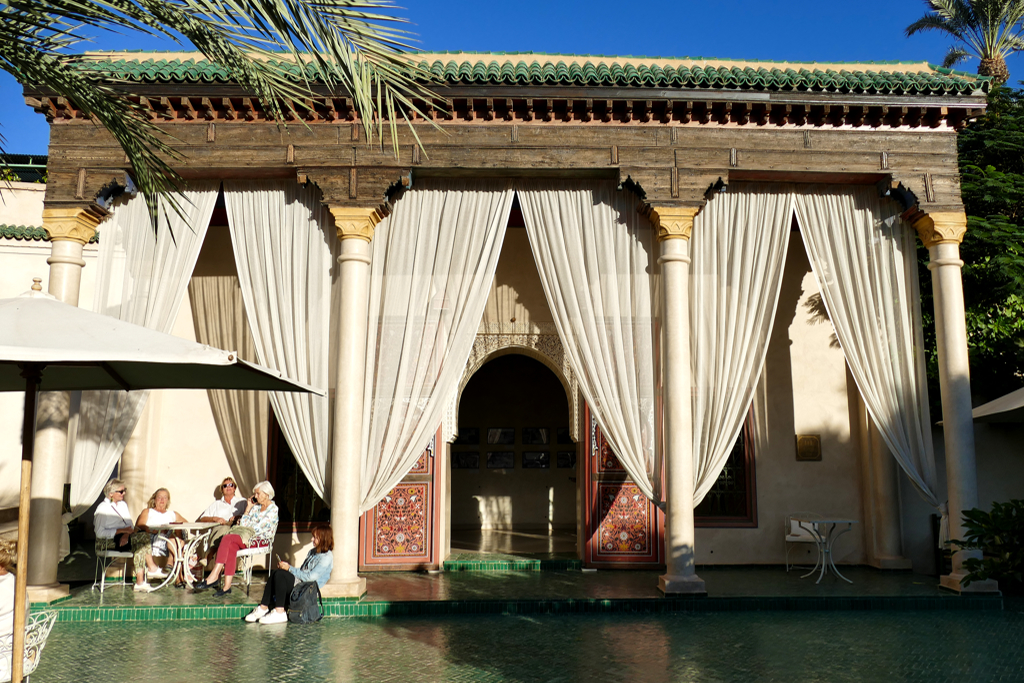
Towards the middle of the 19th century, a new palace was built fully respecting the layout of the original Saadian structure.
After an ever-changing history, Le Jardin Secret was restored and opened to the public in 2016.
The Wealth of Water
In the second half of the 11th century, the Almoravids built the city’s first khettara. A khettara is a drainage tunnel that intercepts the groundwater from an aquifer. It then distributes it to the city’s mosques, hammams, and fountains, obviously. It also reached some of the wealthy houses and palaces, including that of Le Jardin Secret. Having its own water supply was a great privilege and a symbol of prosperity.
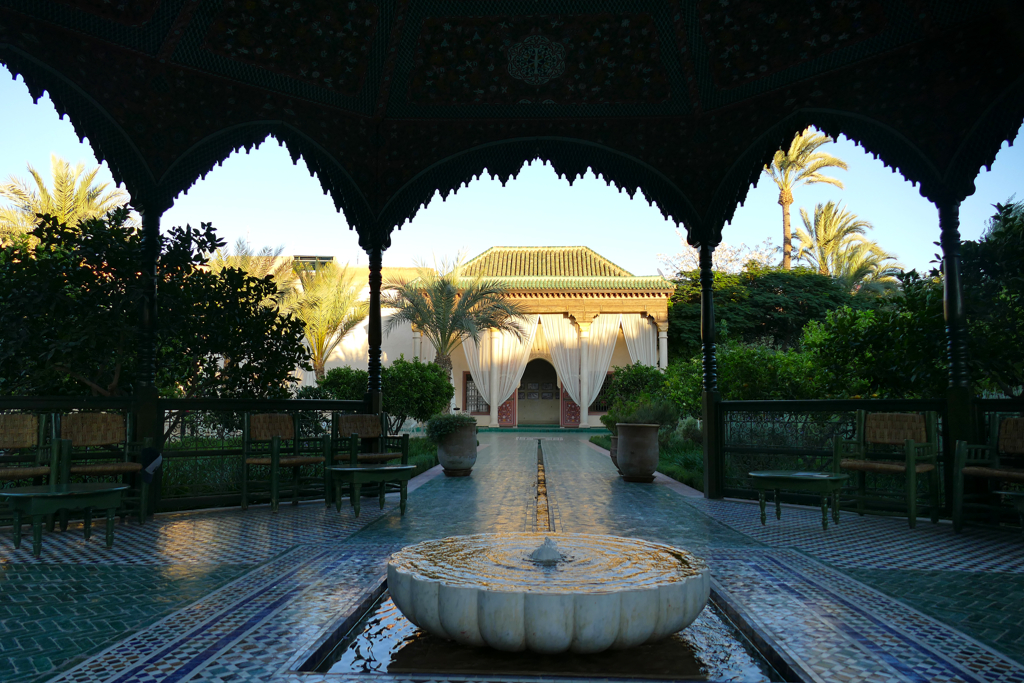
To this date, there are remnants of the palace’s original water system.
As you are visiting the Jardin Secret, you should by no means skip the visit to the tower. Although you have to pay a little extra and stick to a time slot, your visit simply wouldn’t be complete without it.
Le Jardin Secret opens its doors every day at 9.30 a.m. From November to January, it closes at 6 p.m., from February to October at 6.30 p.m., and from March to September at 7.30 p.m. The general admission is 80 Dirhams, and climbing the tower costs an additional 40 Dirhams.
Madrasa Ben Youssef
Obviously, as a non-Muslim, you cannot visit the Ben Youssef Mosque, however, you get an idea of its beauty at the Ben Youssef Medersa, which is located on the souk’s northern outskirts just around the corner from the Musée de Marrakech and the Almoravid Koubba.
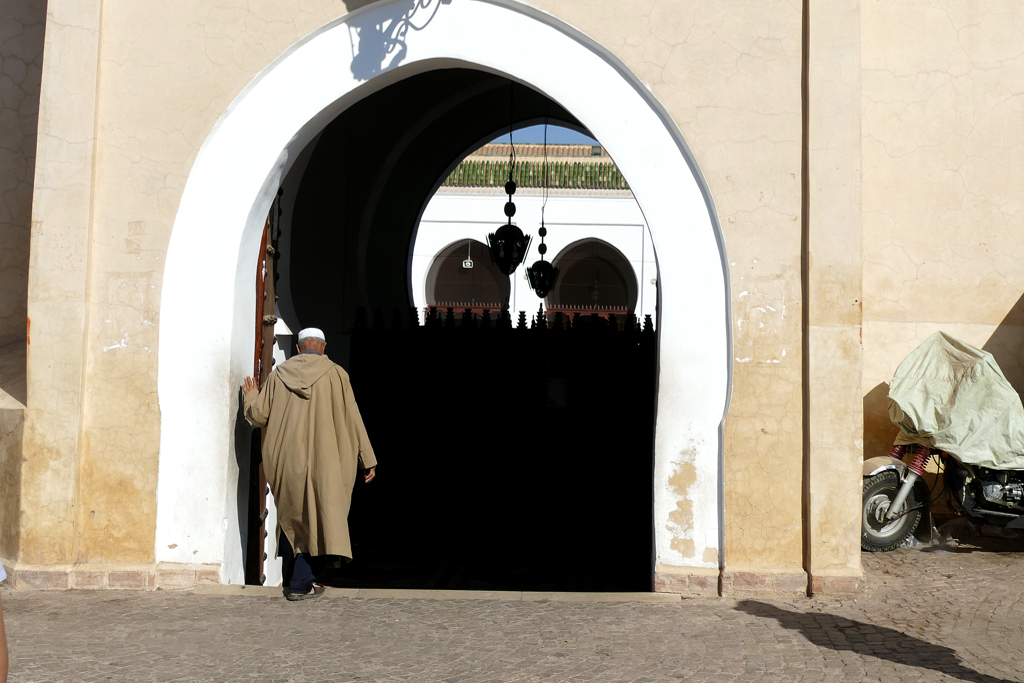
It is a former Koran school that was founded by the Merinid sultan Abu Al Hasan in the early 14th century. Nonetheless, the interior decoration dates in large parts from the Saadian era in the 16th century. As teaching at the Ben Youssef Medersa stopped back in 1960, the premises became a landmark and can therefore be visited by non-Muslims.

As you step through a Mashrabiyya double door, you access a large marble-topped courtyard with a big fountain basin in the center. The water was used for ritual washing before prayer, but it also had a cooling function.

On the upper floor of the Medersa are the small and austere students’ quarters.
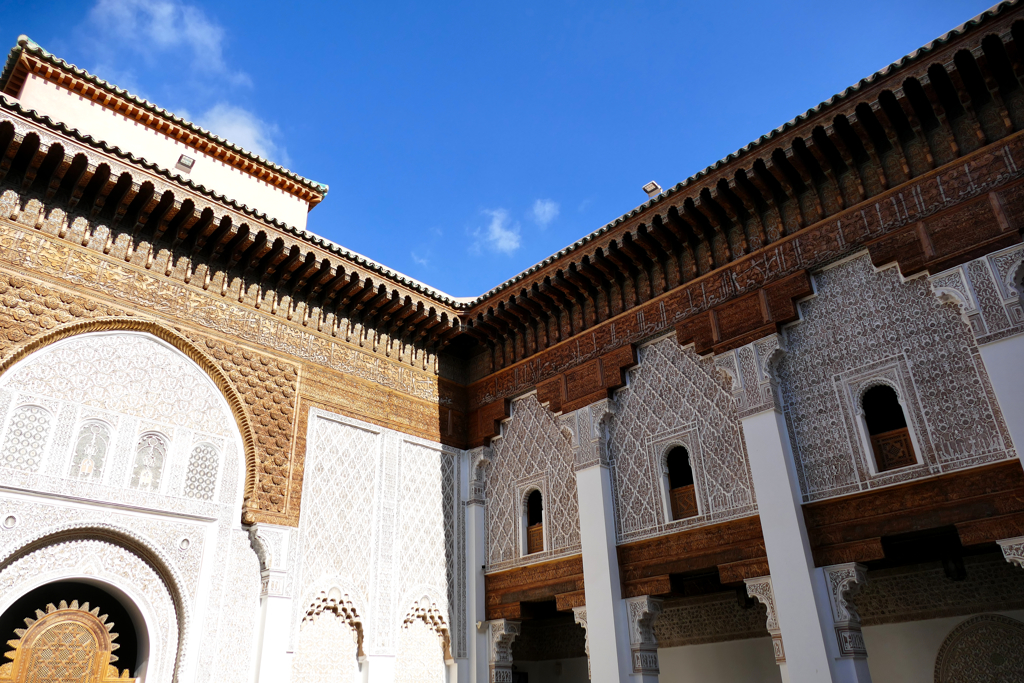
The madrasa is open every day between 9 a.m. and 6 p.m. and the entrance fee is 70 Dirhams.
Why Are Neither Humans Nor Animals Depicted in Islamic Ornamentation?
Actually, the Koran does not forbid portraits of humans. In fact, the oldest surviving portrait of Mohammed dates from 1250.
Yet, a ban on images especially in Sunni Islam is the result of a controversial discussion in traditional Islamic literature and law. Islamic legal scholars have three partly controversial views on this topic:
1. Depictions are not forbidden as long as they are not worshiped. Depiction of God is taboo, however, his attributes and his nature are not affected by this ban.
2. Representation of objects that cast shadows, hence, sculptures, is forbidden while drawings on paper, walls, in textiles are not forbidden, but objectionable. As long as humans or animals are headless or otherwise incomplete while they cast shadows, they are permitted. The shadow theater that is widespread in the Orient and in North Africa is thus legalized under Islamic law since the puppets are perforated and therefore cannot have a soul.
3. The depiction of living beings, humans and animals alike, is forbidden in every respect.
This controversy is one of the reasons why many pious Moslems do not want to have their picture taken. The other one might be that the world is not Disneyland,
and locals are not tourist attractions. It should go without saying to ask people before you take their picture and respect it if they deny it.
Bahia Palace
Walking south towards the Mellah, the Jewish neighborhood, of Marrakech, takes you to the Bahia Palace.
In 1859, the palace was initially commissioned by Si Musa, who was a grand vizier to Alawid sultan Muhammad IV Ibn Abd Al Rahman. Eventually, Si Musa’s son expanded the complex in the late 19th century.
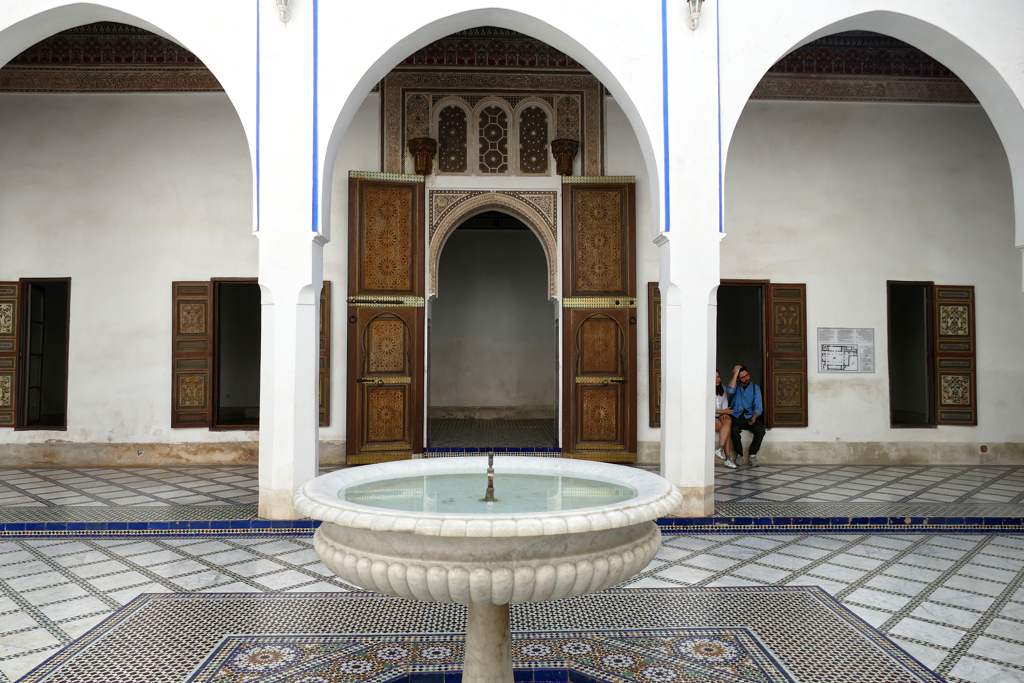
The palace is mostly famous for its decoration. Its walls feature stucco carved with Arabic inscriptions and beautiful designs. The floors are paved with marble and precious tiles. The most outstanding features, however, are the cedar-wood ceilings painted with colorful floral decor.
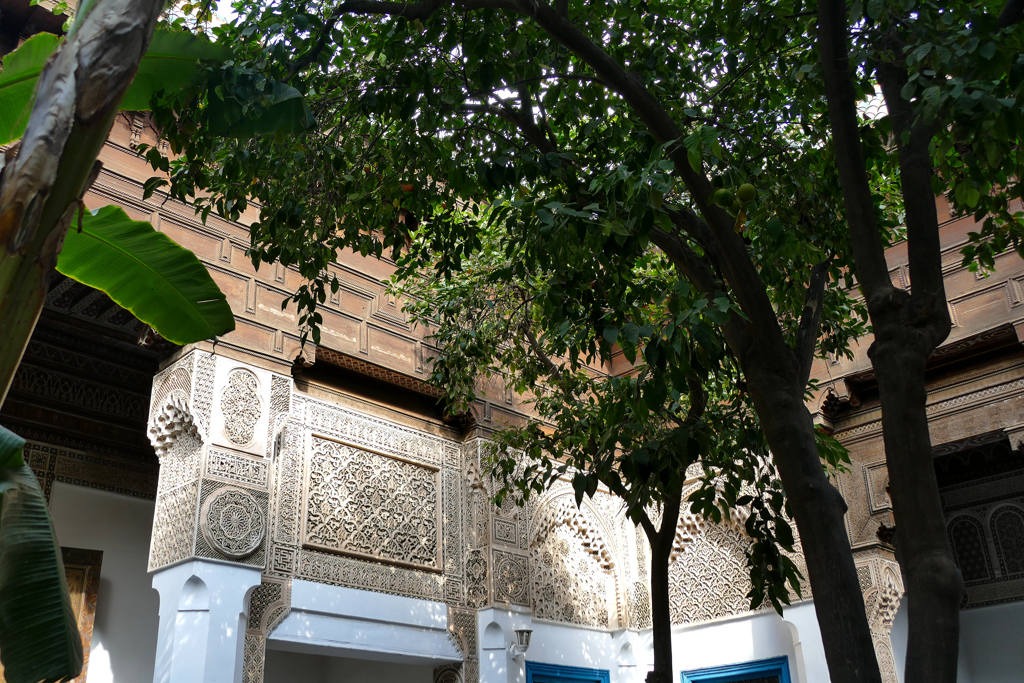
Si Musa’s son Ba Ahmad imported materials from all of Morocco to embellish the palace this lavishly. Also, he commissioned the best artisans from all over the country to create the decorations.
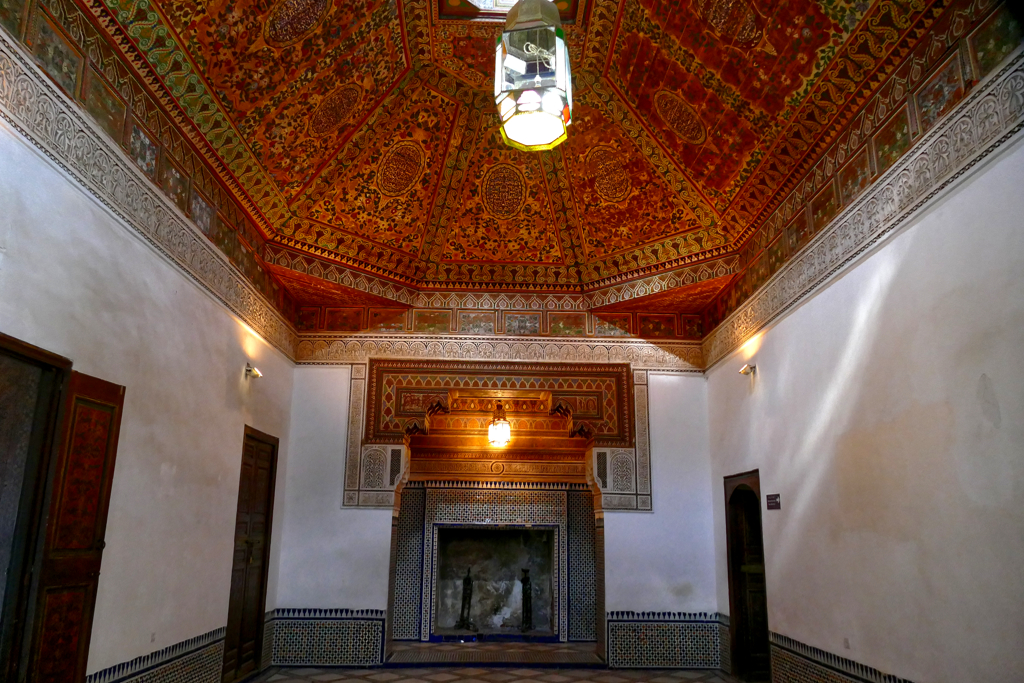
After my visit to the palace on a weekend, which was in addition a national holiday, I recommend planning your visit for either the early morning or late afternoon. The masses of people really spoiled the experience.
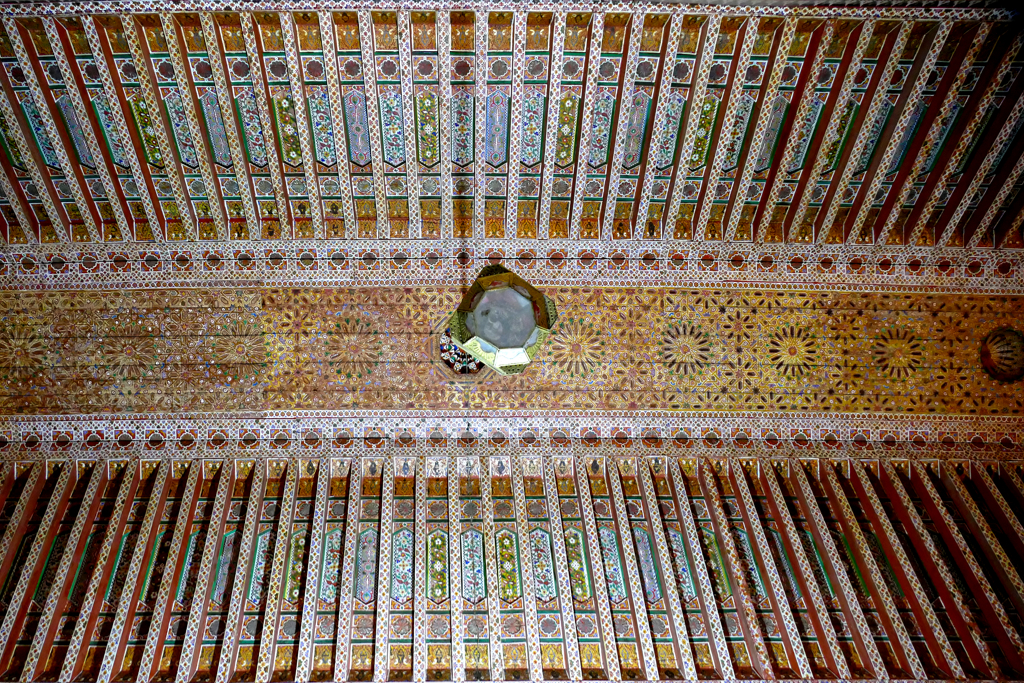
The Bahia Palace is open every day between 8 a.m. and 5 p.m. and the general entrance fee for foreigners is 70 Dirhams.
What’s the Best Time to Visit Marrakech?
I’d say a Wednesday in May.
This answer might sound silly but there is truth in it: Firstly, I would avoid the summer months between June and September when temperatures are rising into the high 30s – and I’m talking Celsius here. You’ll be sweating and suffering. To me, that’s simply not enjoyable.
Winter can be an option. While the evening but especially the mornings tend to be really cold – and most Moroccan houses are simply not equipped for that – the temperatures are rising to a pleasant 20 to 25 degrees Celsius from the late morning into the afternoon. Perfect for exploring the city. Unless, of course, it’s grey and raining and that’s not that exceptional in Marrakech in wintertime.
Therefore, I’d recommend the shoulder season mainly in spring when it’s sunny and warm but not unbearably hot.
But what’s with the Wednesday? Well, as a matter of fact, I’d recommend any weekday from Monday till Thursday because the Medina is much emptier than on weekends. Don’t get me wrong, it’s not empty, just emptier. There will still be day trippers from the beach resorts around Agadirs and other visitors. But since Morocco is just a short flight from the southern European coast, many French and especially Spaniards are coming to Marrakech on a weekend trip so it gets terribly crowded. Hence, if you can, avoid a visit to Marrakech on a weekend.
Al Badi Palace
Funny enough, the Al Badi Palace was one of my favorite landmarks in Marrakech. It is located in the Kasbah district south of Jemaa Al Fnaa Square.
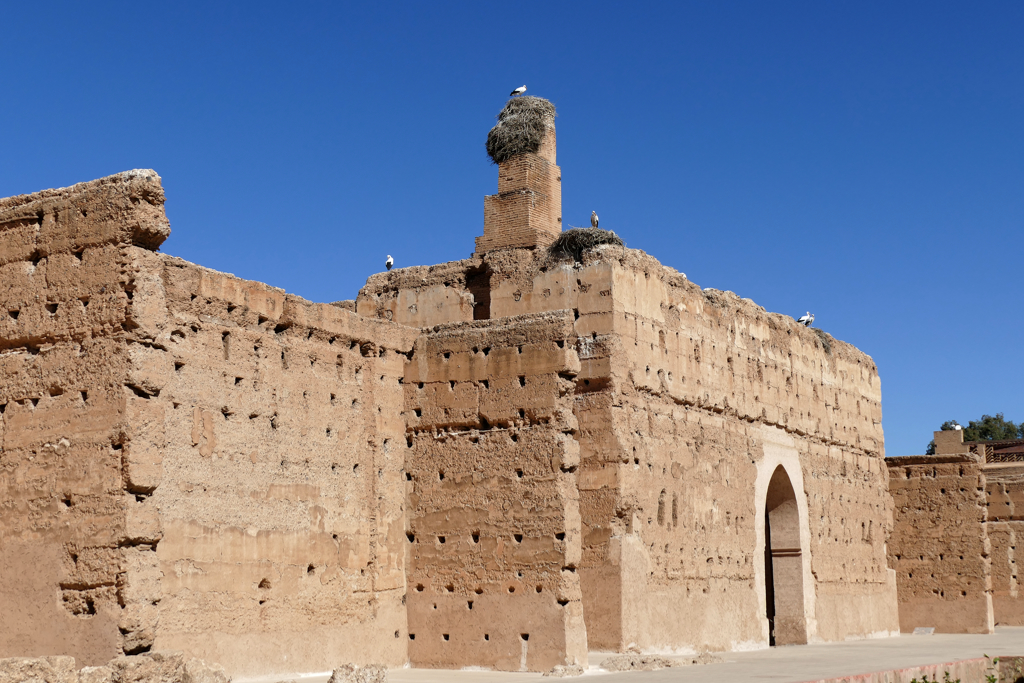
The Saadian Sultan Ahmad Al Mansur commissioned the palace at the end of the 16th century, employing lots of precious marble slabs which had been unknown in Morocco up to that time. The palace was also home to the Sultan’s harem, which consisted of more than 500 women.
Nevertheless, the palace was stripped of all its splendor under the Alawid Sultan Mulai Ismail. The marble slabs and even entire columns were brought to Meknes and reused in the construction of the palaces of the Ville impériale.
Therefore, the Al Badi Palace is mostly in ruins today. However, a few remaining richly worked marble chapiters are reminiscent of the former glory that you can still feel while walking the premises.
The Highlights
The entire courtyard was divided into four segments. Fig and pomegranate trees, as well as orange and jasmine bushes, are still in orchards constructed below street level. In the center of the main court is an elongated shallow water basin.
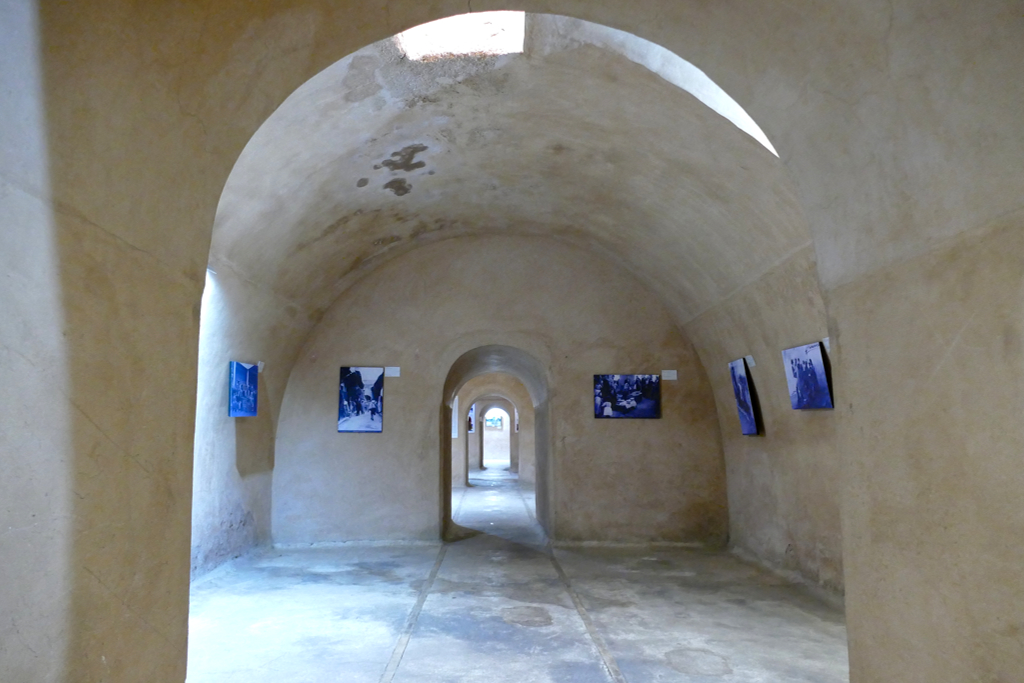
As you start your tour of the site, you get to see a beautiful photo exhibition that is at least as touching as the pictures at the Musée de la Photographie.
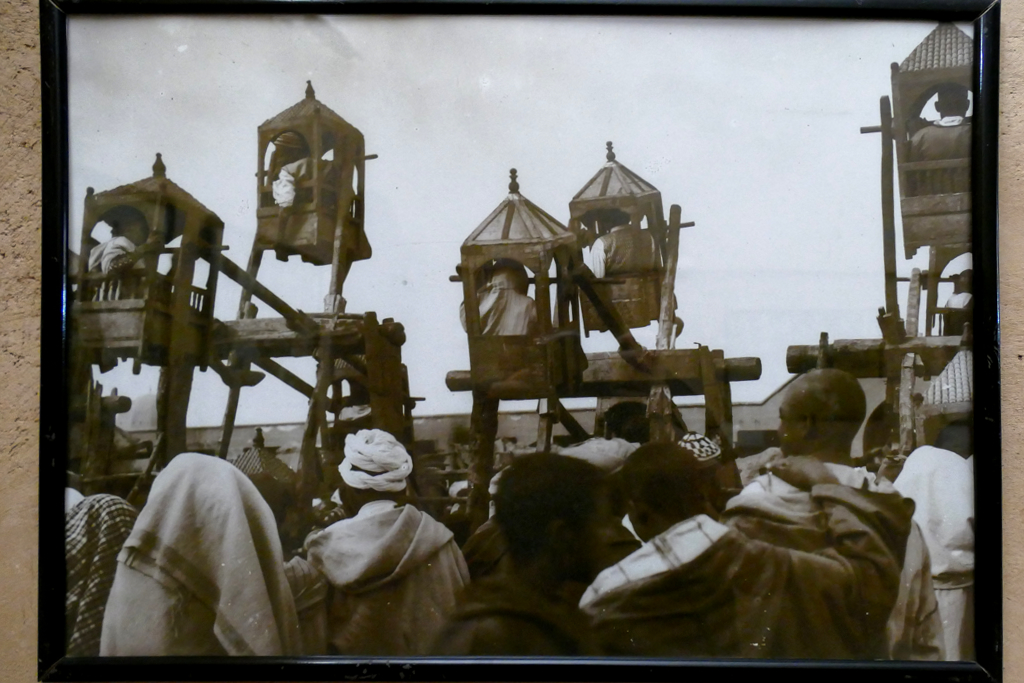
The palace’s greatest treasure is a magnificent prayer chair, a so-called Minbar, from the Koutoubia Mosque. It was made during the Almoravids’ era in the early 12th century. The masterpiece of Moorish design, which is about two meters high, was produced in Córdoba.
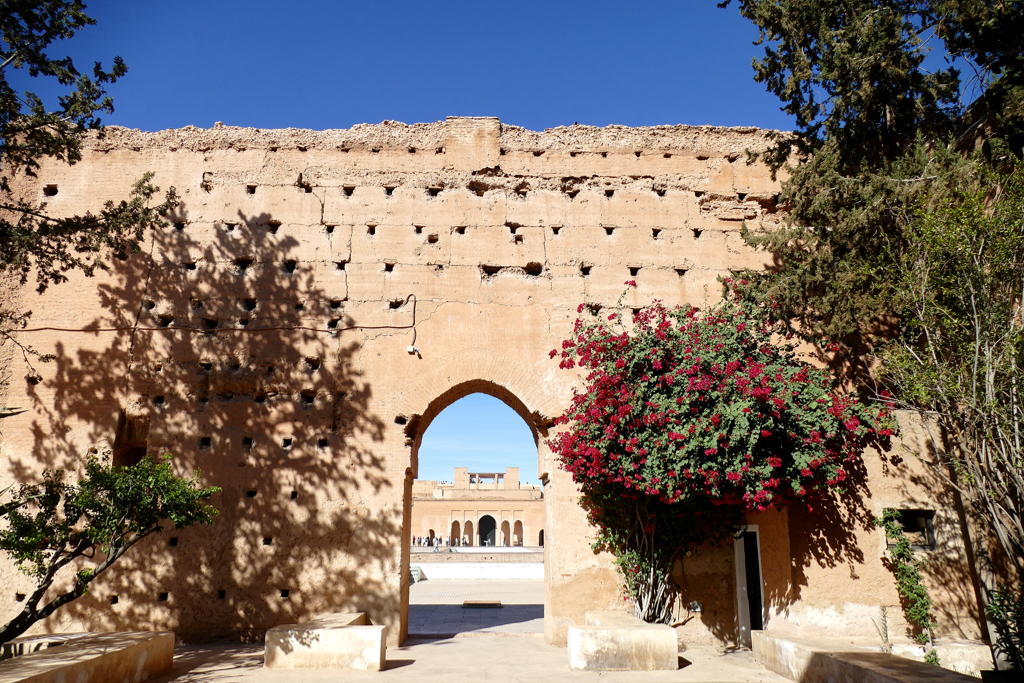
Howsoever, each visit’s highlight – literally – is climbing the wall in the courtyard’s southeastern corner. From there, you have a – metaphorically – majestic view of the city of Marrakech all the way to the Atlas mountains.
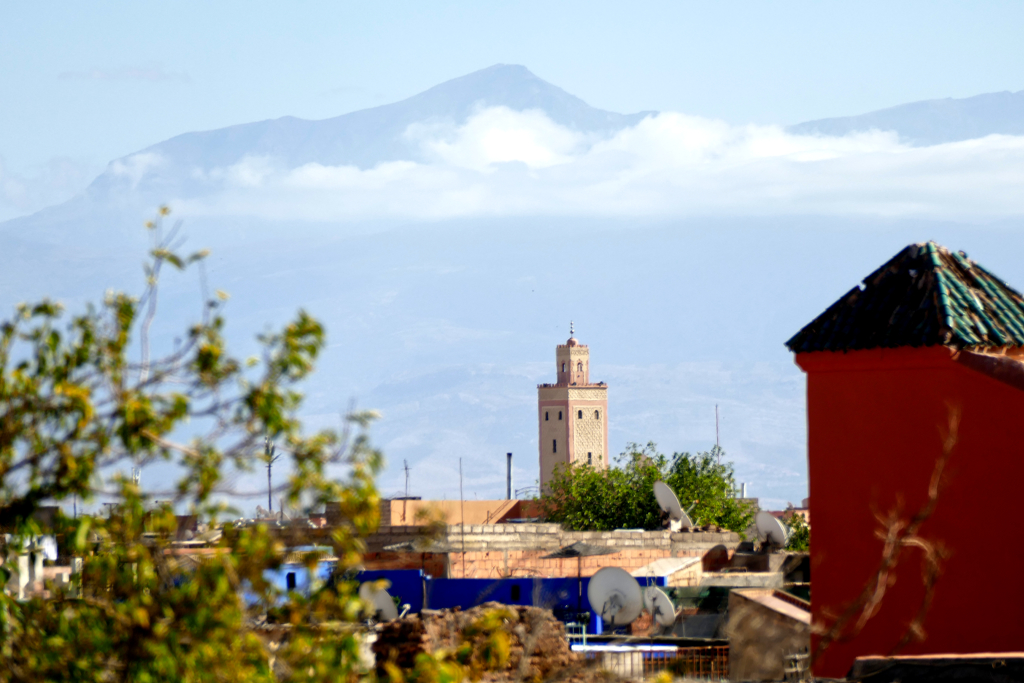
The palace is open every day from 9 a.m. to 5 p.m. The admission fee for foreigners is 70 Dirhams.
Kasbah
In Algeria, Morocco, as well as Tunisia, Kasbah is a fortress above or within the Medina. Very often, it was surrounded by walls and guarded by the military as it often housed the palace of the king. Also, senior civil servants and their families lived within the Kasbah. The Jewish quarter, the so-called Mellah, was usually located right in the Kasbah’s vicinity since the Jewish population was often under the special protection of the monarch.
In Morocco, the term Kasbah also applies to fortifications outside of cities, for instance in the Atlas Mountains. They were installed to control the coasts and the secluded hinterland.
Also, there are Moorish fortresses in several Andalusian cities such as Málaga and Granada. Funnily, in Spanish, they are called Alcazaba, which clearly stems from the term Al Kasbah.
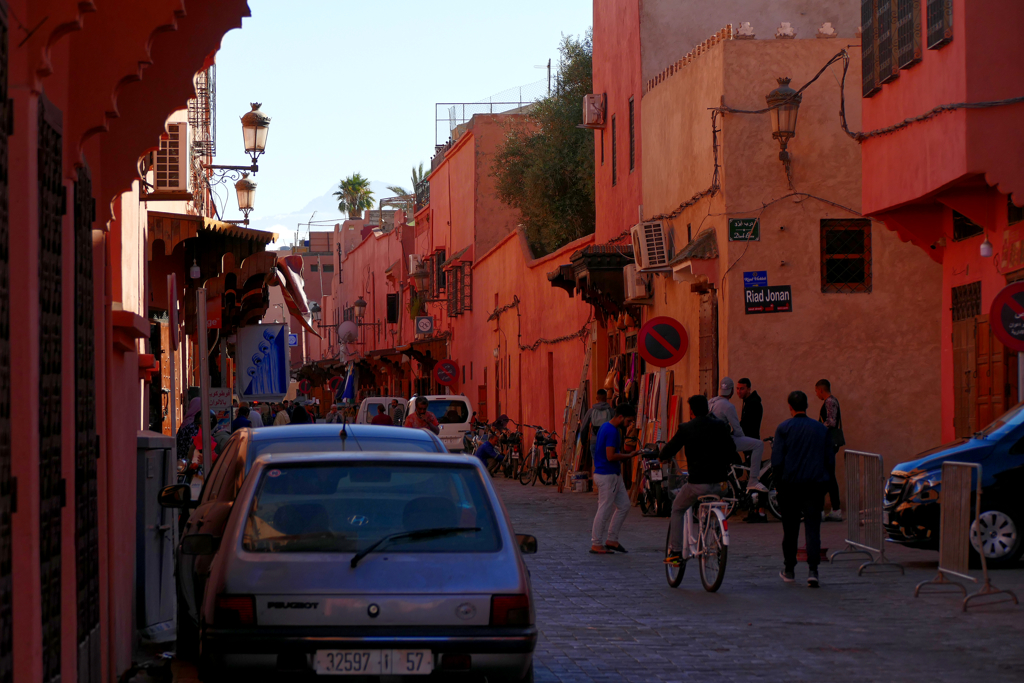
Marrakech’s busy Kasbah is a great place for foodies as the Rue de la Kasbah is lined with great restaurants and hip cafés.
Obviously, there are some of Marrakech’s most iconic landmarks in the Kasbah like for instance the imposing medina gate Bab Agnaou, the Moulay Al Yazid Mosque, and the beautiful Saadian Tombs.
Saadian Tombs
Obviously, you cannot visit the inside of the Moulay Al Yazid Mosque, but since it’s standing in an open square at the entrance of Rue de la Kasbah, you’ll at least get a good view of the beautiful façade.
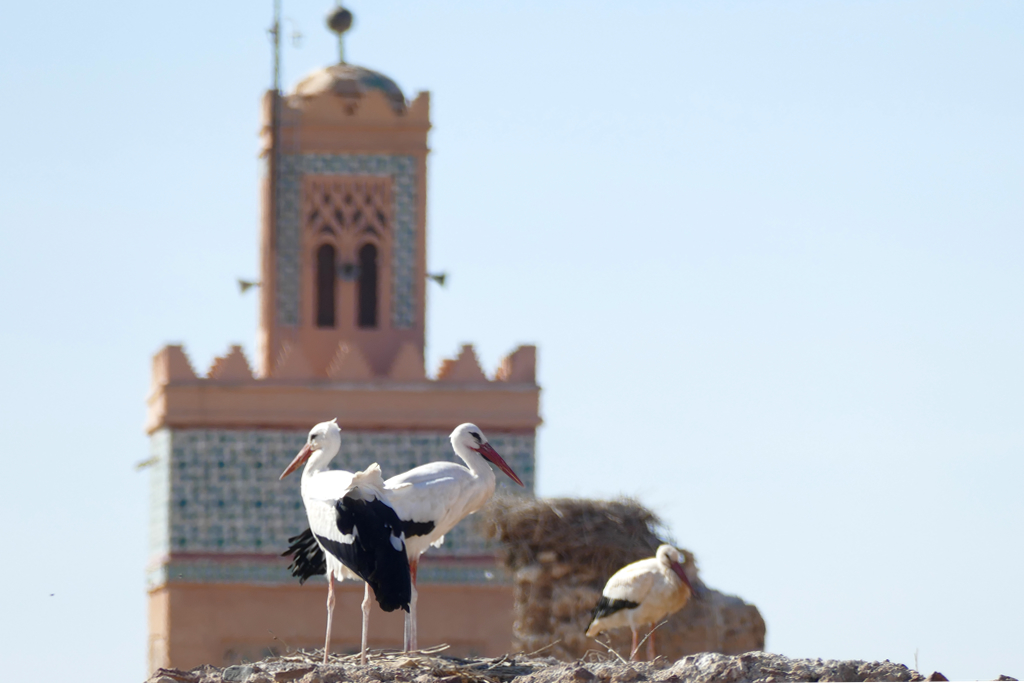
However, next to the mosque are the Saadian Tombs, which are really impressively beautiful. From 1557 to 1664, the complex served the Saadian dynasty as its most significant necropolis.
However, initially, the site served as the mosque’s garden. The current mausoleums and enclosing walls were built in the late 16th century. Hence, long before the Saadian reign, a number of illustrious dignitaries were buried on the premises.
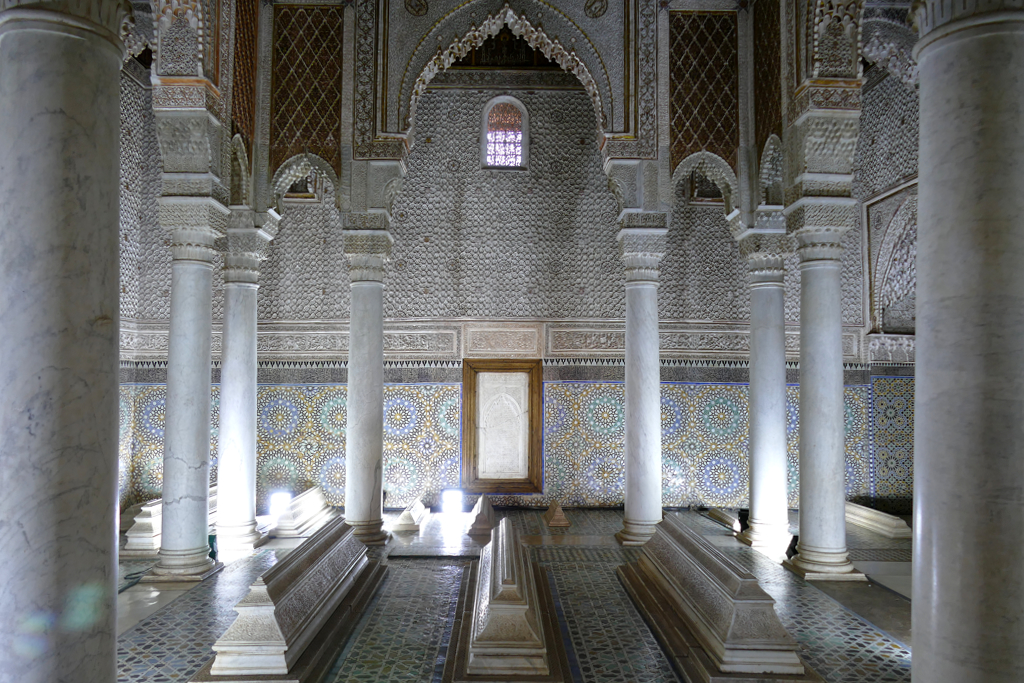
After the first Saadian Sultan Mohammed Al Sheikh was buried here, his son Abdallah Al Ghalib followed his example and had a tomb built for himself.

Interestingly, it was not until 1917 that the complex was rediscovered. Since then, it has been continually restored.
Today, the complex houses the tombs of seven sultans and 62 of their family members. More than 100 other tombs are found in the two mausoleums and a leafy courtyard.
The Saadian Tombs are open from 9 a.m. to 5 p.m. every day, and the general entrance fee is 70 Dirhams.
Bab Agnaou
The Bab Agnaou forms the boundary between the Medina and the Kasbah. It had no defensive function but was purely representative.
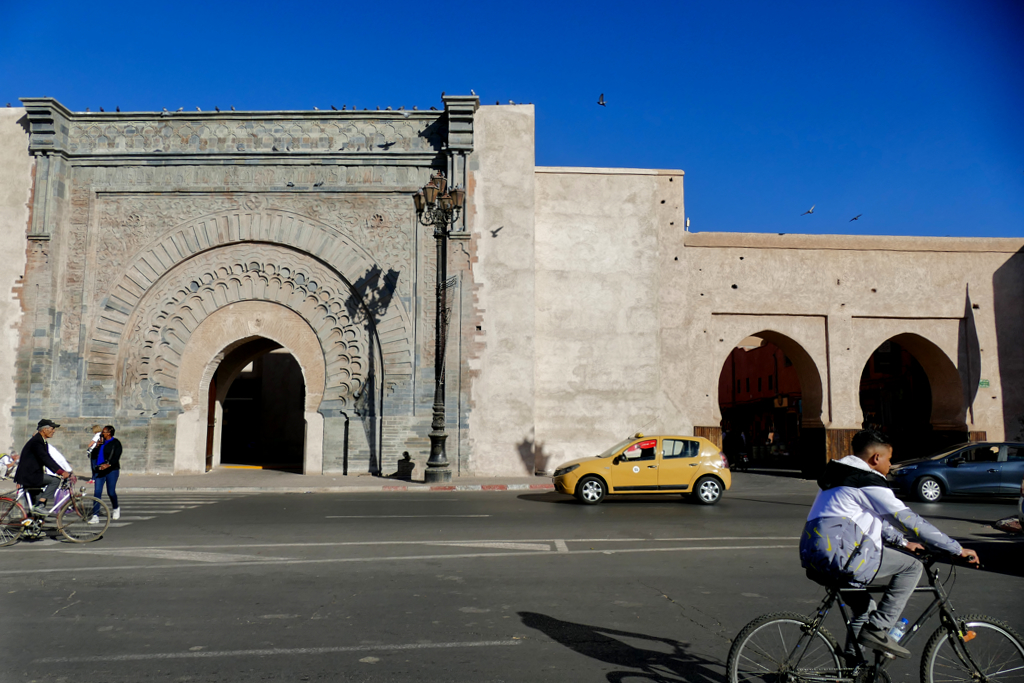
To this date, the time of construction remains uncertain. Some archaeologists claim that the first Almohad sultan Abd al-Mu’min commissioned it shortly after the capture of Marrakech in 1147. Others believe his grandson Yaqub Al Mansūr to be the commissioner and thus think it was built only in 1195.
Either way, it is one of Marrakech’s most beautiful gates.
Jardin Majorelle – Musée Berbère – Musée Yves Saint Laurent
We’ve all seen the Jardin Majorelle as one of the key spots in the Netflix series Inventing Anna. While Anna and her friends paid 500 Dollars each for their visit, the average visitor pays 120 Dirham – which is about 12 €uros or Dollars – for the garden. If you want to include the Musée Berbère and the Yves Saint Laurent museum, you pay another 100 Dirham for a combo ticket.
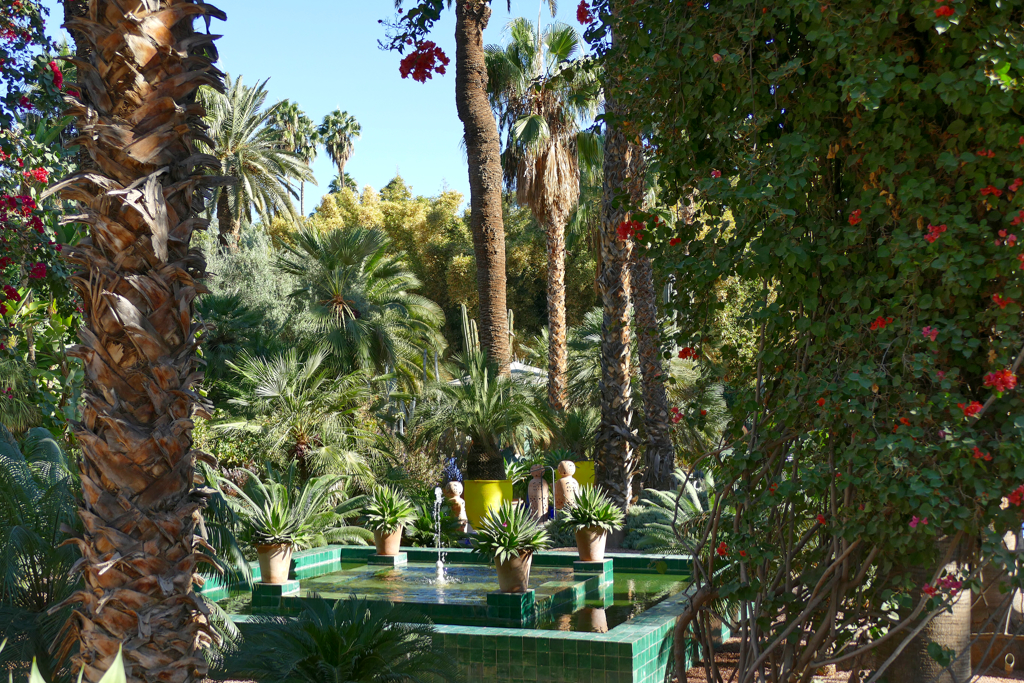
But what are these gardens everyone is so crazy about?
Well, as the French painter Jacques Majorelle settled in Morocco, he installed the garden in 1923. Actually, today, Majorelle is mostly remembered for the garden and not for his art. However, the particular shade of cobalt blue that he used for various features around the garden is actually named after him.
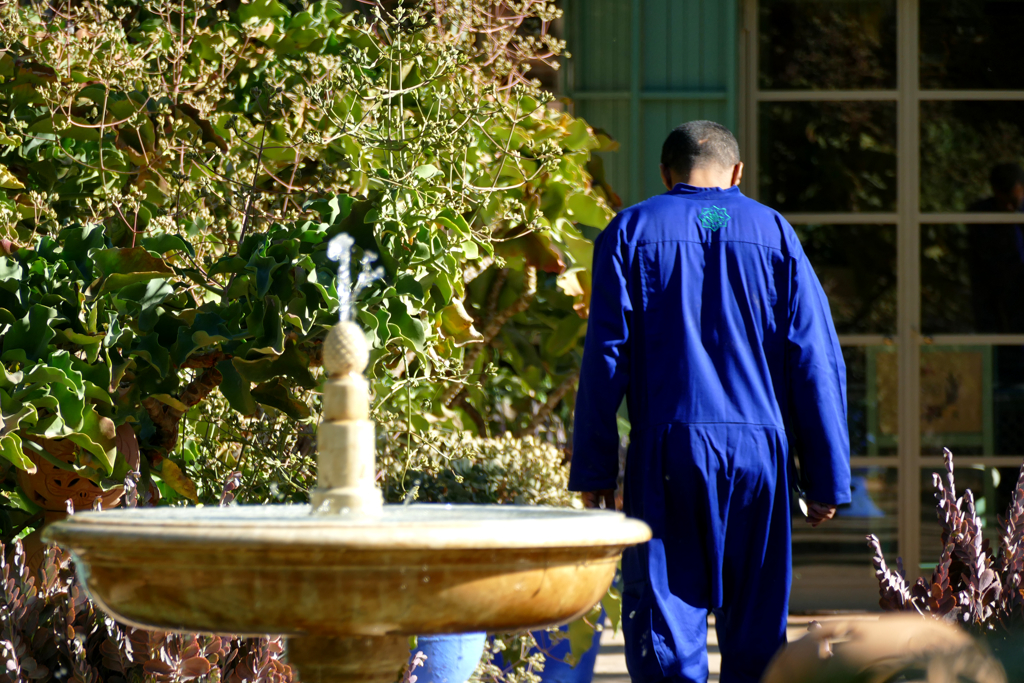
The garden was opened to the public in 1947. Today, it consists of plants from all five continents. Also, there is a bamboo grove, loads of cacti, and bougainvillea in bold colors.
New Neighbors
Yves Saint Laurent and his partner Pierre Bergé bought the site in 1980. In 1997, Bergé set up The Majorelle Trust foundation to ensure the permanent maintenance of the complex.
After leaving the fashion business in 2002, the villa and the garden became one of Saint Laurent’s retreats. After his death in 2008, his ashes were scattered in the rose garden.

Today, only a lucky few have the opportunity to visit Yves Saint Laurent’s former home and private garden. Guests of The Royal Mansour hotel can arrange private tours with the director of the Majorelle Foundation for a very high donation – as seen on Netflix.
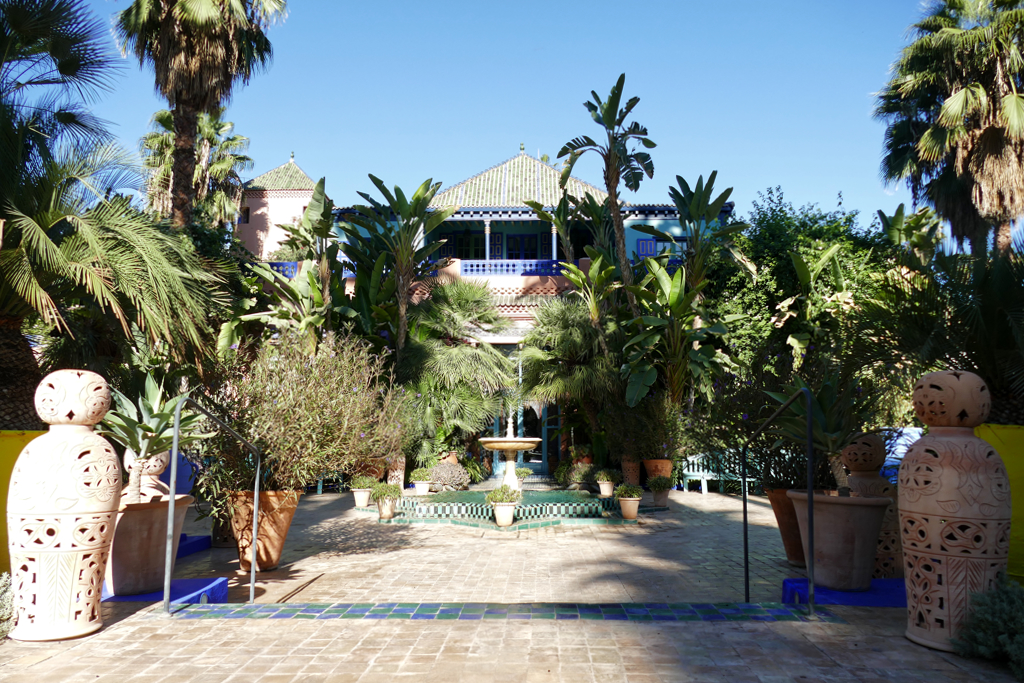
Other ordinary mortals can visit the Jardin Majorelle every day between 8 a.m. and 6 p.m. for 120 Dirhams.
However, you can buy a combi ticket for 220 Dirhams, which includes also a visit to the Musée Berbère and the Musée Yves Saint Laurent.
Note that if you add the Musée Yves Saint Laurent, you cannot book a time slot before 10 a.m. as this is the hour the museum opens. This is absolutely stupid since no one forces you to visit the museum first. You could walk the gardens for two hours and visit the museum later. But that’s how it is.
Musée Berbère
The Jardin Majorelle also houses the Musée Berbère, which was founded by Pierre Bergé.

The exhibitions are in Jacques Majorelle’s former painting studio. While influencers promote themselves in front of the cobalt blue façades, inside, you’ll be amazed by the variety and extraordinary creativity of Morocco’s Berber people. From the Rif mountains all the way to the Sahara – get to know about the oldest people in North Africa, whose great culture is still alive.

The Musée Berbère is open every day between 8 a.m. and 5.30 p.m., and the general entrance fee is 30 Dirhams. However, it is included in the combo ticket.
Musée Yves Saint Laurent
The Musée Yves Saint Laurent in Marrakech was officially opened in 2017, hence, at about the same time as the Yves Saint Laurent museum opened in Paris. While the letter is showing a comprehensive retrospective of Saint Laurent’s designs, the exhibition in Marrakech focuses on creations that were inspired by Moroccan Berber culture and other African arts.
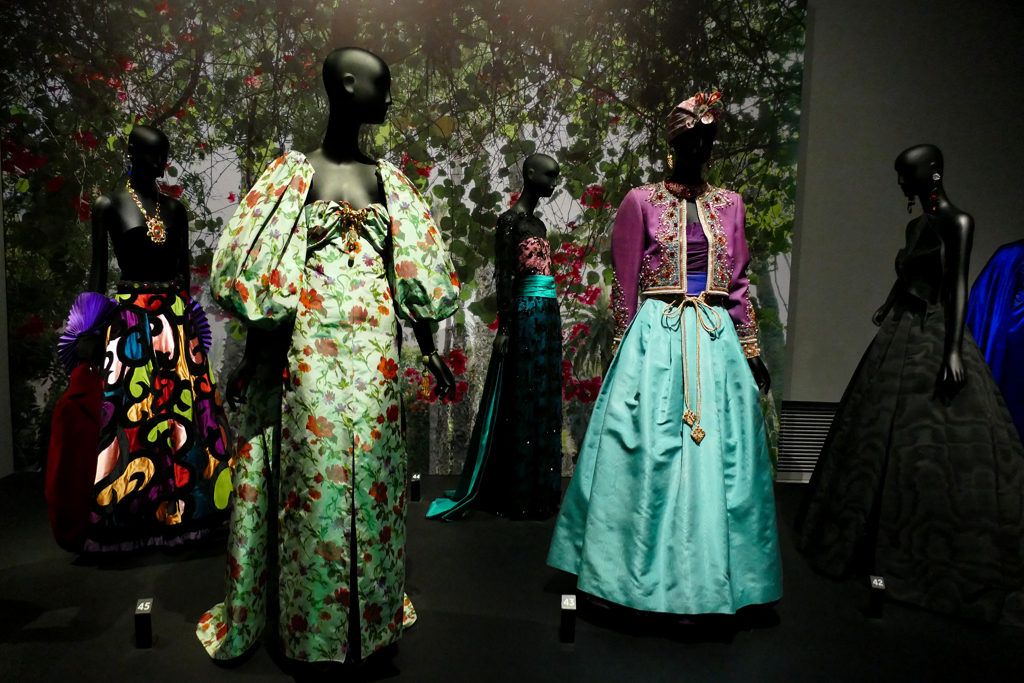
There is a smaller room for changing exhibitions and a large showroom where you get to see
an exhibition on Yves Saint Laurent, as well as 50 of his dresses. For conservation, those are exchanged on a regular basis.
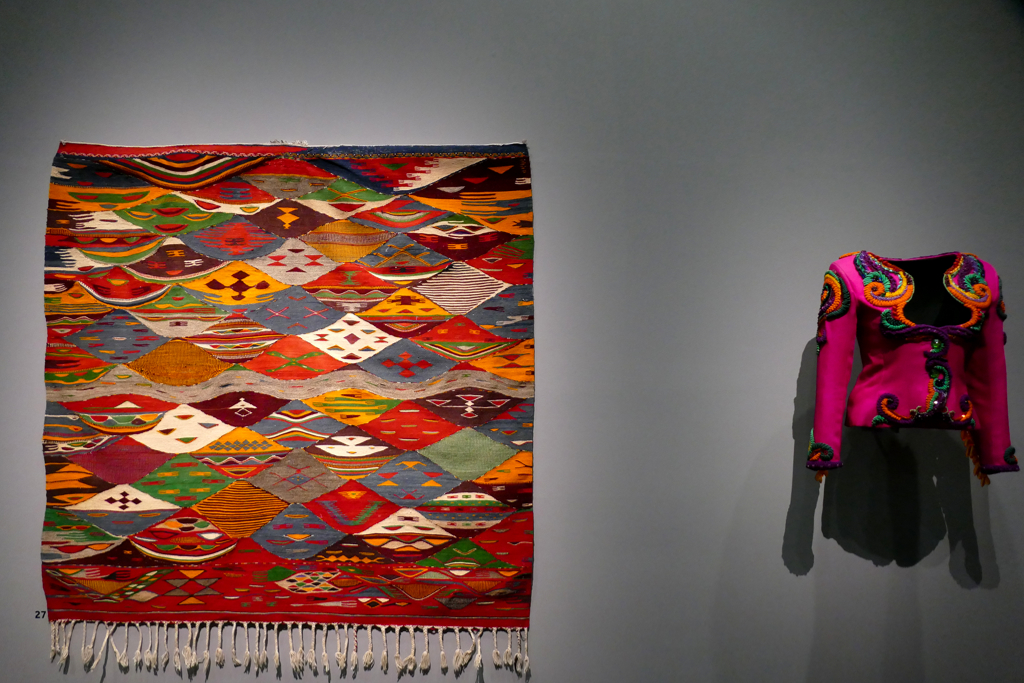
In addition to the exhibition space, there is also an auditorium where you get to see Saint Laurent’s final fashion show – which I found the most interesting part, to tell you the truth.
Referring to Yves Saint Laurent’s creations as well as traditional Moroccan architecture, the building is austere from the outside. Like many Moroccan traditional buildings, the museum building has no windows facing the street, and the magic happens inside behind closed doors. The façade is divided into a lower part made of pink granite and an upper part made of bricks. Then, reddish terracotta bricks are arranged in six different patterns.
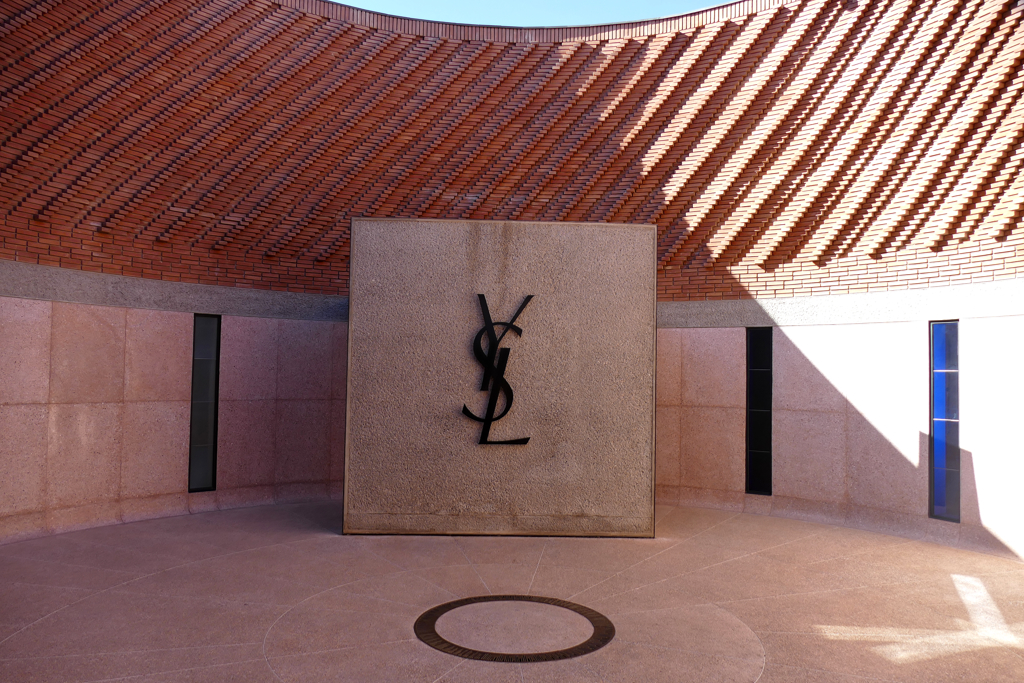
Musée Yves Saint Laurent is open every day between 10 a.m. and 6 p.m. and the general entrance fee is 100 Dirhams. However, it is included in the combo ticket.
First Come, First Serve
Due to Yves Saint Laurent, the garden has been popular, however, rather an insider tip. But as we all know, we are living in the era of Instagram. I’m not sure if one of the Kardashians has also posted the garden, but this Anna series definitely hyped the whole thing over the top.

So as I arrived shortly after ten, there was a long queue all the way down the street. Since it seemed to move quite fast, I optimistically joined all those Netflix watchers. The queue moved maybe two couples forward, then it came to a halt. And didn’t pick up speed again. We were standing in the same spot for twenty minutes. Then for thirty minutes. Now the queue seemed to move again. Shucks, it only moved because some people had given up and were gone, leaving their spot to those with more perseverance.
As Time Goes By
After forty-five minutes, I asked the couple behind me to keep my spot, and I made my way to the top of the line.
There, the cash window was closed. No cashier in sight, but a tall security guard.
The cash would open again in about an hour. Then, I could buy a ticket. With this ticket, I had to stand in another line, waiting to enter. Damn. I remembered the jardin’s website, where they strongly recommend buying tickets online one day in advance. Why do I always have this illusion that I’d be the only visitor? I could have conveniently bought a ticket and frolicked in the gardens by now.
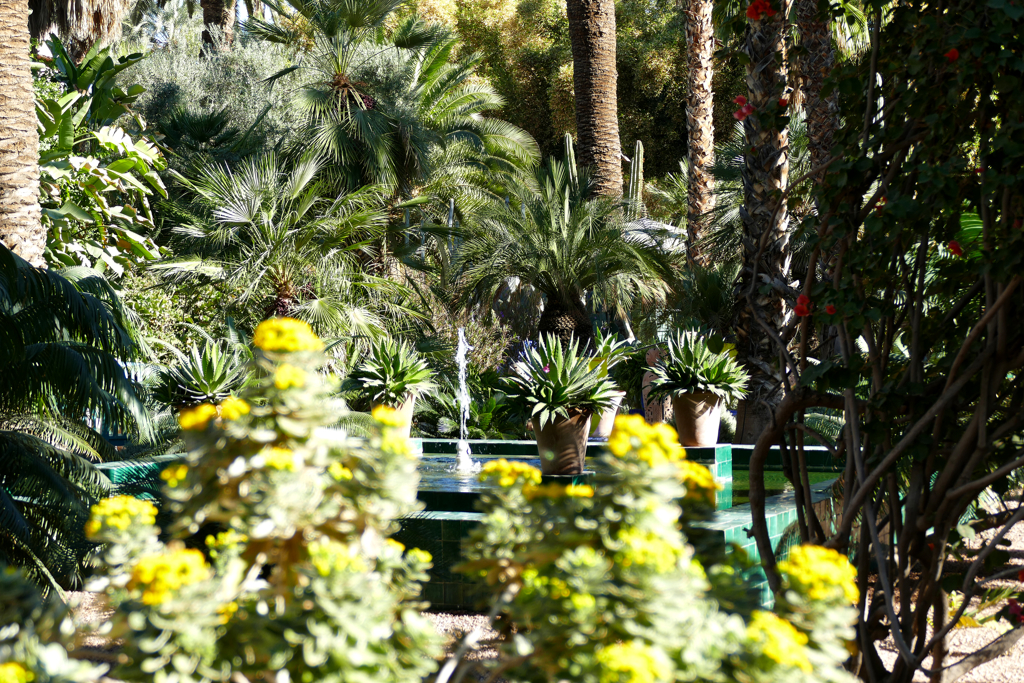
Lessons learned. I took another bus back to the Koutoubia stop. From there, I walked back to my Riad. I got on the internet, opened the jardin’s site, chose the type of ticket and the hour I wanted on the next day, and I was all set.
Next time, I’ll listen.
Practical Information
How to Get There
Air Travel
Marrakech’s Ménara Airport is located about 6 kilometers southwest of the city center.
A so-called petit taxi into the city center should cost 70 Dirhams during the day. In the evening, you should pay 100 Dirhams, and at night or during the wee hours 150 Dirhams. There is a price list including any surcharges located right at the taxi stand. Yet, the taxi driver will still try to negotiate a price of two to three times as high.
By the way, the petit taxi on your way back from the city to the airport should be only about 40 Dirhams.
If you’re fresh and rosy and it’s daytime and you’re not in a hurry, go for it and haggle with him. If you are tired after a long flight and it’s dark, ask yourself if it’s worth the relatively small price difference. Under no circumstances is it worth your safety.
However, there is also a bus every hour from the airport to various spots around the city. It operates until midnight, and you’ll find it right in front of the arrivals terminal. It costs only 30 Dirhams. Oftentimes, the driver will also accept that you pay him 3 €uros, but only if you have small change. You’ll find a schedule with departure times attached to the bus.
Land Routes
Train
The station is about two kilometers west of the Medina. Since Marrakech’s train station is a dead-end station, there are no connections to the south. Hence, if you want to go, for instance, to Agadir, you can continue by one of the Supratours buses which are stationed on the right side of the train station.
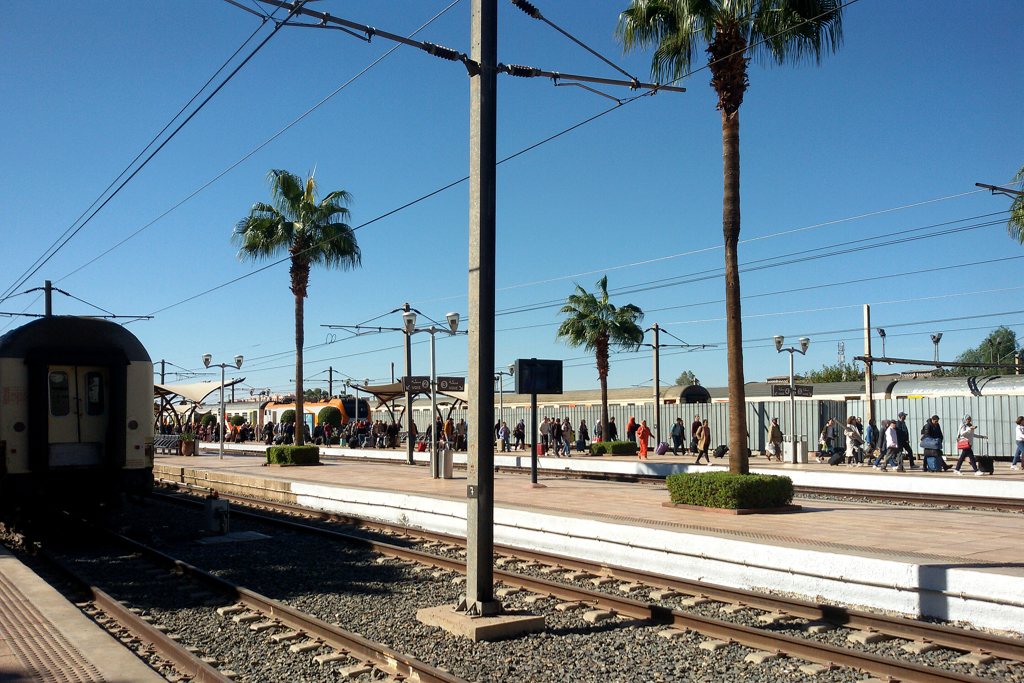
The larger cities in Morocco’s north, however, can be easily reached from Marrakech. To Rabat, it takes a bit over four hours, and to Fez a bit over seven. Ticket prices start at around 200 Dirhams. The night train to Tangier costs 370 Dirhams in a sleeping compartment, which is a valid option since this is about 200 Dirhams cheaper than the high-speed trains during the day. You can buy tickets at the station or online. Unfortunately, the website is only in French.
The fares quoted are for seats in the 2nd-class compartments. Fares in 1st class are about a third higher than in the 2nd, which is not a lot of money given how cheap tickets are.
I took the train a couple of times. The difference between 1st and 2nd classes is the size of the seats: In 1st class, three people sit in one row and have a bit more space since, in 2nd class, it’s four. Also, 1st class is more climatized, which in November was not really an advantage. In summer, however, this might make a truly dramatic difference.
During my trip, I did not experience even the slightest delay. Although the trains are not squeaky clean, they are okay. There is a guy selling refreshments, and assigned numbered seats in 1st, as well as 2nd class, are another convenience. All in all, travelling by train was very reliable and comfortable.
Bus
Marrakech’s main bus station Gare Routiere is at the Place Al Mourabitine about 1.5 kilometers north of the Medina. There are various city buses going to the square.
There are bus connections from Marrakech to virtually all major cities in Morocco. However, the standards between the different bus companies can largely differ. Travellers who can afford a higher fare usually opt for the CTM bus company. It’s reliable, and the coaches are clean. However, the trips are about double the fare of standard local overland buses. You can check out CTM’s itineraries and prices online, where you can also book your trip right away.
Supratours has its office on the other side of the park Bab Doukkala.
Shared Cabs
Travelling by so-called Grands Taxis is very popular among Moroccans and a viable alternative to trains and buses also for visitors. Spots in the taxis are sold individually. Mind you, they usually carry four passengers in the rear and two in the front. To have more space, you can purchase more than one seat. This being pointed out, I personally find it underlines the economic and social differences, but that’s a very subjective view. Also, if you are willing to buy more places, why don’t you buy a train or bus ticket right away?
The Station de Grands Taxis is right behind the main bus station Gare Routiere in Place des 7 Saints.
Note that the fares for the shared cabs going overland are regulated, hence, it’s worth checking the official rates with the tourist board or another reliable source.
How to Get Around
Once you are in the Medina, you basically have to walk everywhere. Apart from the Jardin Majorelle, you can reach all the sites introduced in this post on walking. However, don’t underestimate the distances.
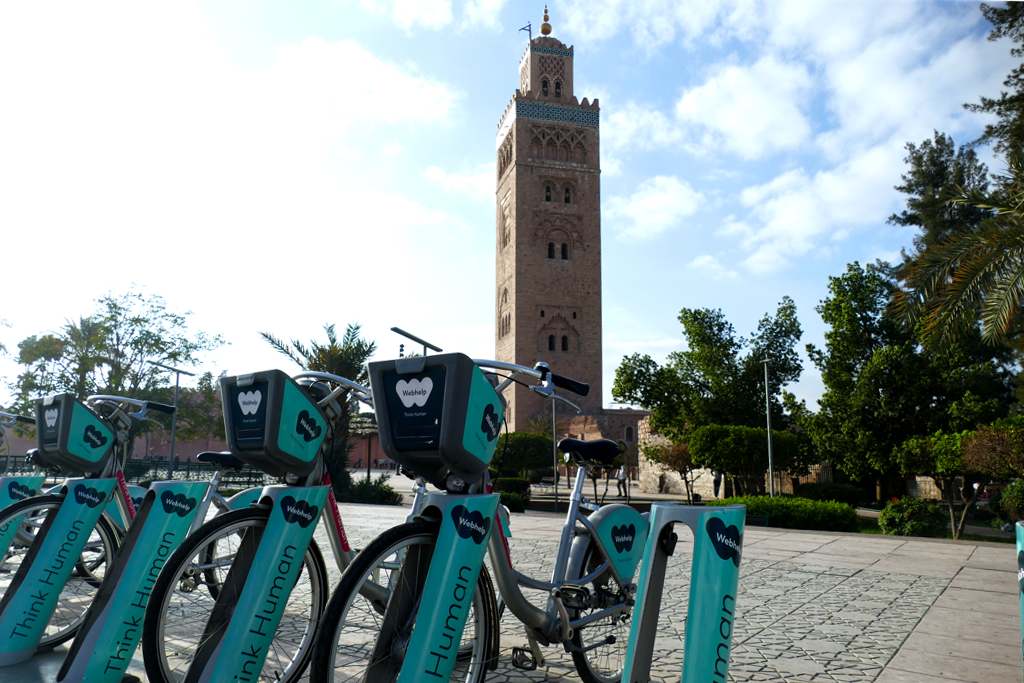
Since I’m such a huge advocate of public transport, I took the wonderful Alsa city buses from time to time. Their system was installed in various Moroccan cities in cooperation with the Spanish Alsa bus company. They are operating from 6.30 a.m. until 10.30 p.m. and a ride costs only four Dirhams, no matter how far you are going. You buy your ticket from the driver.
I particularly enjoyed the fact that you’ll find connections on Google Maps. Unfortunately, this isn’t the case either in Rabat or in Fez. But in Marrakech, you can type your destination, and Google Maps shows you the best routes.
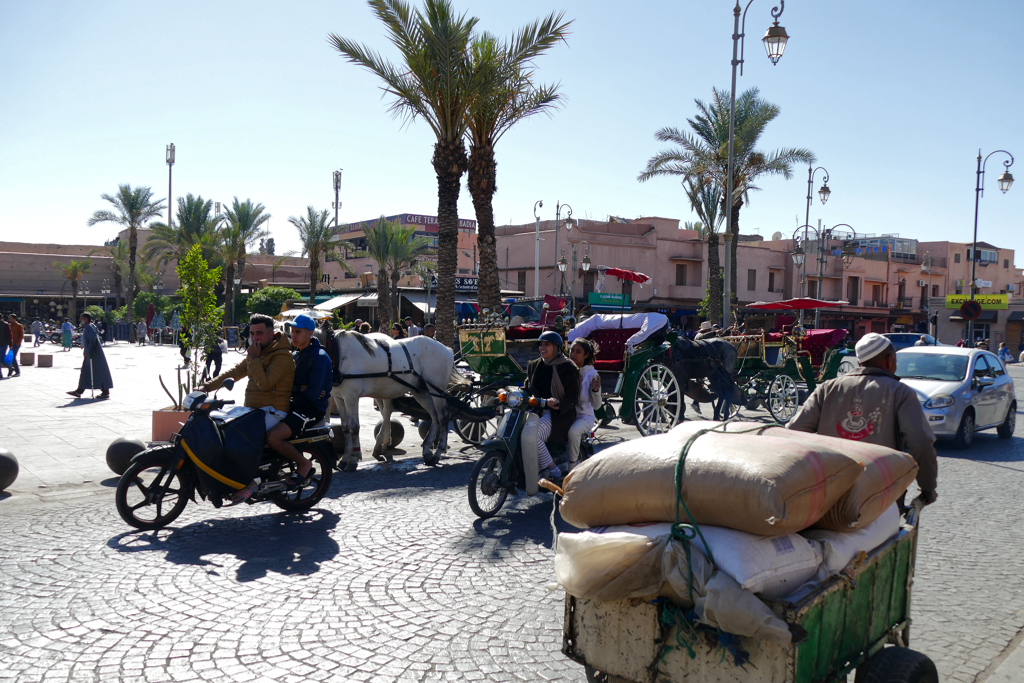
The most frequented bus stops are around the train station, at the Place Al Mourabitine where the central bus station is located, and in the vicinity of the Koutoubia Mosque.
The so-called Petit Taxi is popular with locals and tourists alike and can be cheap. Yet, you need to negotiate the fare by trying to push the initially quoted price down to half. As a rule of thumb, a ride within the Medina should be around 30 Dirhams.
Organized Trips
Before getting to Morocco, I was petrified that I might get lost forever in one of the Medinas. Yet, orientation is not the only reason why at least one tour in the company of a knowledgeable and trustworthy guide is highly recommended. You’ll miss out on so much if you don’t have that local person who brings you into the loop of 1001 stories’n’secrets that hide behind those high walls of the Medina.
Hence, for me as a slightly nervous solo traveller, a first walk through the Medina in the company of an experienced guide braced me for exploring the city by myself.
Also, especially as a solo traveller, it’s sometimes nice to join activities and get to meet other visitors. Therefore, I recommend joining one of these tours, preferably at the beginning of your stay – I promise, you won’t regret it*:
Where to Stay
When it comes to accommodation, I recommend considering two aspects: I would always stay right in the Medina or at least on the very outskirts. I stayed at the Riad Sidi Omar* in the vicinity of the Koutoubia, which was perfect. Although it was close to the craziness, it was behind some back alleys and therefore extremely quiet. Riad – that’s the other thing I’d suggest: Don’t stay at a regular hotel but enjoy the mesmerizing atmosphere and personal service of a so-called Riad.
Yes, Riyadh is also the capital of the Kingdom of Saudi Arabia. But more importantly, in Morocco, a Riad is a traditional house or palace with an inner courtyard. You wouldn’t expect the austere, windowless outer walls to hide lavishly decorated rooms around a courtyard. The internal space is lit and ventilated through the roofless yard. This architecture offers the inhabitants protection and privacy.
Today, many owners transform their Riads into guesthouses, conserving the original style and creating a very personal atmosphere. Often, they also add a roof terrace where you can relax and take in the mesmerizing views of Marrakech and beyond.
Staying at a Riad takes you closer to the Moroccan way of life. Yet, there is one small disadvantage: They are usually a bit off the main streets and only accessible through narrow alleys. Therefore, you often have to find your way through a crazy maze. Omar, by the way, marked the entire way from the main street of the Medina with white chalk flashes guiding you all the way to the Riad. He has to renew them after every rain.
On this map, you can check out the availability and prices of some suitable lodging*:
What to Eat
Moroccan cooking is influenced by various cultures. Most dishes contain at least a little meat, but also different vegetables and rice or couscous.

A big meal starts with a series of hot and cold salads, the so-called Mezze. Also, salads are served with meals in most restaurants. I never had any problems with food whatsoever, still, you might want to refrain from eating raw salad and veggies if you have a sensitive gut.
The main course is often Tagine – whereby Tagine is the name of a clay cooking tool as well as of the dish you prepare in it.
In a Tagine clay dish, couscous, potatoes, vegetables, and meat are stewed in their own juices. For the delicious oriental taste, caramelized onions, raisins, plums, almonds, boiled eggs, and pickled lemons are added. Obviously, there are also purely vegetarian tagines. Another staple is couscous. Couscous is the name of rolled durum wheat as well as a dish based on this semolina topped with various kinds of vegetables and meats.
Due to the long cooking times, Tagines and Couscous are safe even for sensitive foodies.
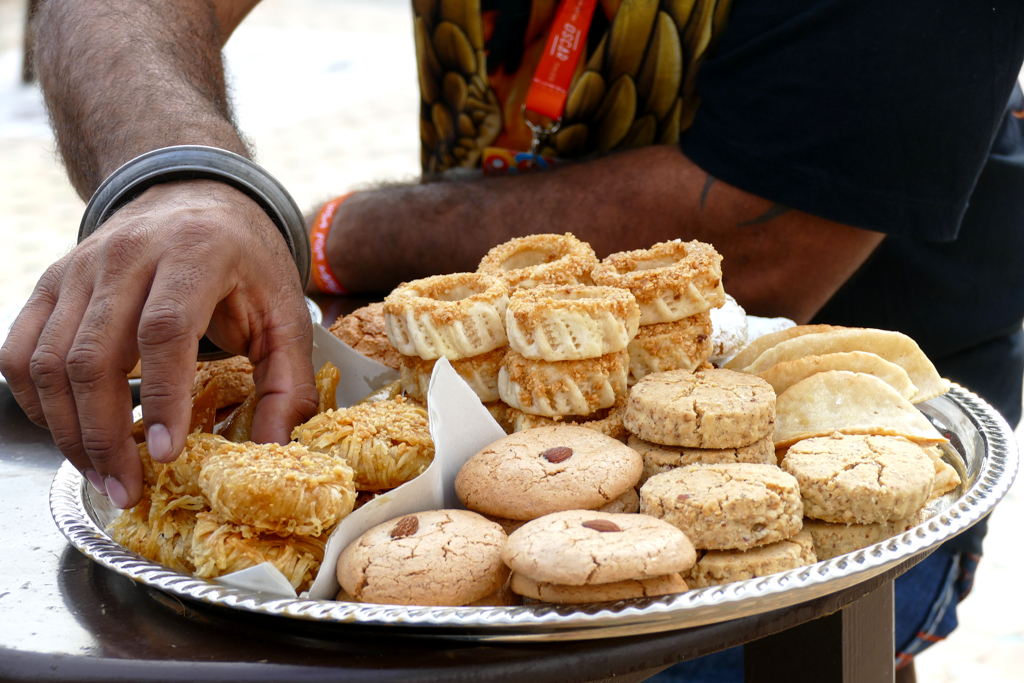
Traditionally, Moroccans eat with their hands and use bread to get the food into their mouth. As a visitor, you’ll be challenged to do so, too, only when you’re having street food. Otherwise, restaurants automatically supply their guests with cutlery.
My favorite restaurant is the Cuisine de Terroir on Rue Kennaria 118 in the Medina towards the Mellah. The food is delicious and plenty, and the service is just so friendly and helpful. They are open every day between 11 a.m. and 11 p.m. You’ll find the exact location on the map below.
Drinks
The most popular drink in Morocco is mint tea. If you don’t want it too sweet, you better order it without sugar. You always get the sugar on the side.
Another real treat is the excellent freshly squeezed fruit juices like orange or pomegranate juice. However, don’t buy them just anywhere, but take a closer look if the shop is clean.
There is Moroccan beer and Moroccan wine, which you can mostly enjoy only in certain, especially licensed bars and big international hotels. Also, those are quite expensive by international standards as they are heavily taxed.
Cash And Cards
The Moroccan Dirham is the country’s official currency. It is abbreviated MAD and subdivided into 100 santimat.
The exchange rate is 1 US$ = 10.70 MAD and 1 €UR = 11.10 MAD as of July 2025. However, you can check the conversion rate to US$ on this page and to €uros on this page.
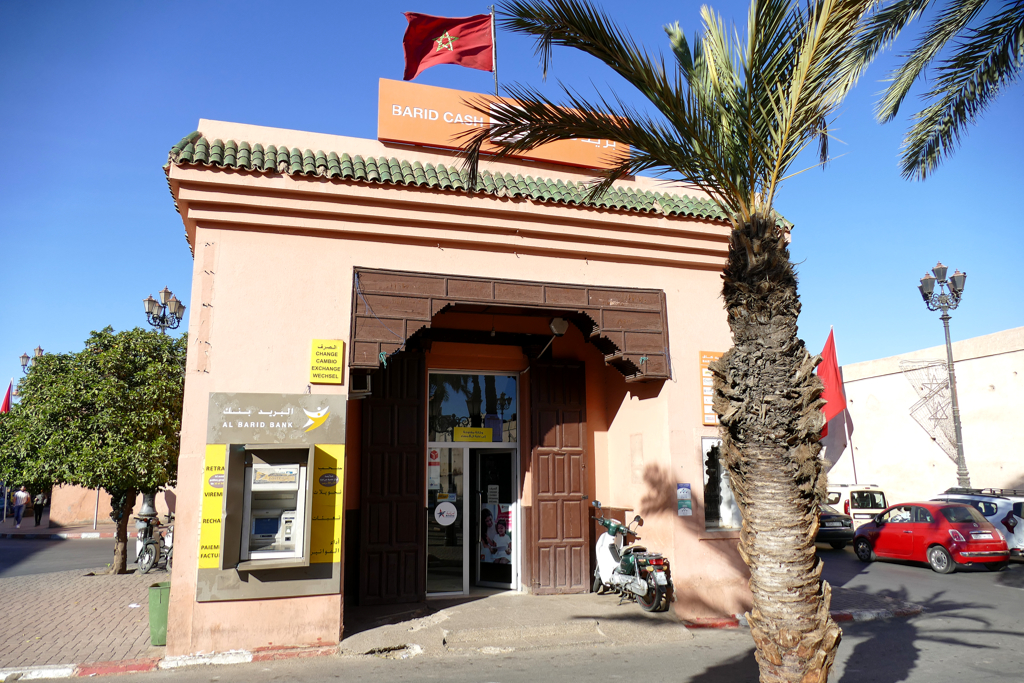
Even some small businesses and stands in the old souks accept credit cards. However, not all of them do, and not everyone is happy if you pay with plastic.
On the other hand, I had to pay for three nights at the Riad in cash.
So yes, you should have some cash on you. But don’t worry, there are so many ATMs around that you’ll always have access to money if necessary. However, keep in mind that you can only withdraw an amount of up to 2,000 Dirhams.
The operating languages at ATMs are normally Arabic, French, and English.
Language
Although the two official languages are Arabic and Amazigh, most Moroccans are fluent in French since that’s the first foreign language they teach at local schools. Also, it’s Morocco’s primary language of commerce and economics, culture, and sciences.
Spanish is spoken by many Moroccans, particularly in the northern regions.
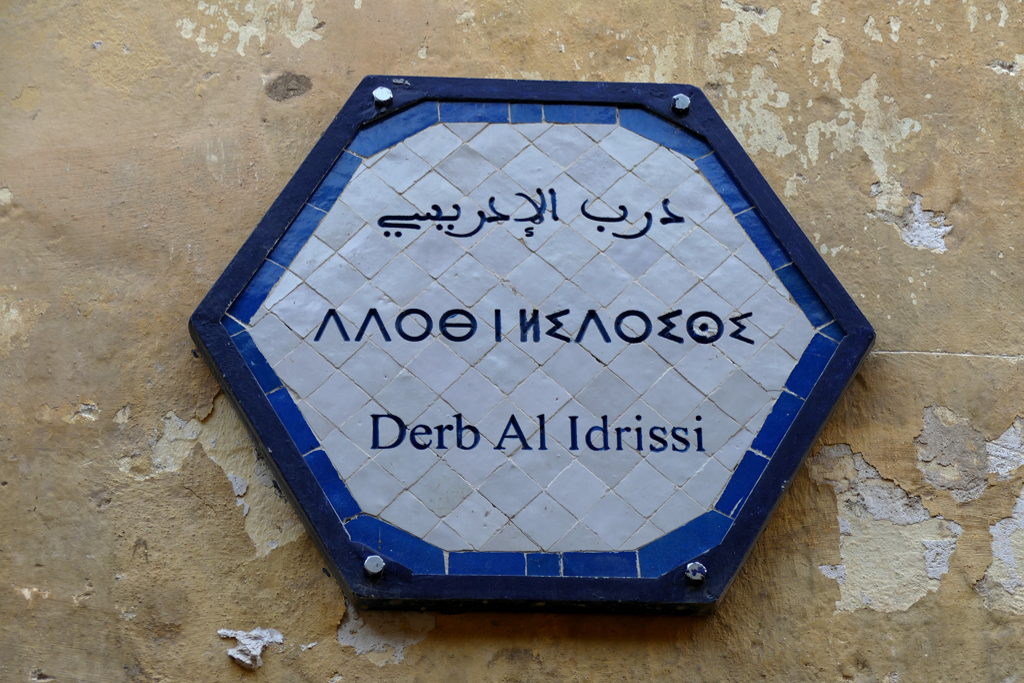
I came to Morocco to brush up on my rudimentary Arabic skills at a language school in Rabat. If you happen to speak some Arabic, too, beware that Moroccan Arabic, the so-called Darija, is very different from the standard Arabic, also referred to as Modern Standard Arabic (MSA) or Al Fusha. Nevertheless, Fusha – which is pronounced Fus-ha and not like Shisha – is used in books, newspapers, TV news, and political talk shows
I’ve found this really great App to broaden my Arabic vocabulary and practice what I’ve learned. It’s called Lingohut and it offers an amazing choice of more than 45 languages! Hence, if you feel more comfortable communicating in French, you’ll find it there, too.
However, due to international tourism, most people working in tourism and gastronomy speak quite decent English and very often also other languages such as Italian, Spanish, or German.
Connection and Communication
Since international roaming is still terribly expensive, you better get a Moroccan SIM card as soon as possible. You can get one for 20 Dirhams or 50 Dirhams from Inwi and one for 30 Dirhams from Maroc Telecom and Orange. They are sold either in their respective stores, at some Moroccan airports, or in many kiosks and convenience stores. The guys who are selling the SIM card will happily install it for you and arrange possibly necessary configurations. This way, you’re not depending on Wifi, and you can make local calls.
Normally, when purchasing a SIM card, you should be asked to show some ID, however, I got mine at the train station in Salé outside of Rabat, no questions asked.
Obviously, you can also use free Wifi in many places in Morocco. Basically, every mall, museum, eatery, accommodation, train station, and even the tram in Rabat offers free Wifi. In Marrakech, I’d recommend visiting the so-called Cyber Parc. There is free WiFi throughout the park, and you even have access to free internet terminals.
In Morocco, they use plug types C and E. Their voltage is 220 V, and the frequency is 50 Hz. Whereby, as nowadays all these chargers have integrated adapters, the voltage and frequency don’t really matter.
By the way, you’ll find comprehensive travel info in my post World’s Most Complete Travel Information – an indispensable globetrotter classic.
Marrakech was only one of the four imperial cities of Morocco that I visited. To read about the others, go to this post and take your pick!
Map
On this map, you can see where all the places I’m introducing in this post are located.
Clicking on the slider symbol at the top left or the full-screen icon at the top right will display the whole map, including the legend.
Pinnable Pictures
If you choose to pin this post for later, please use one of these pictures:

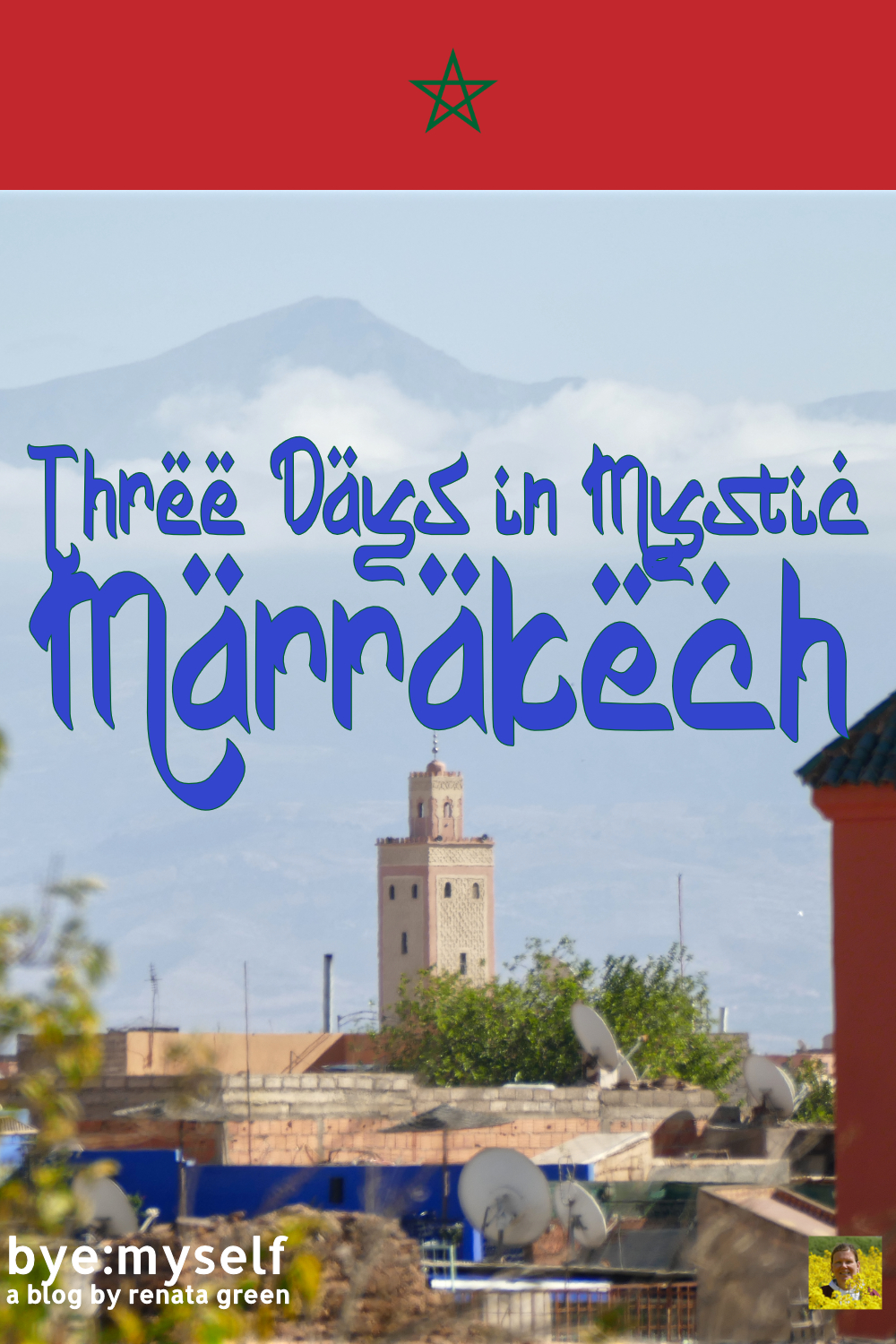


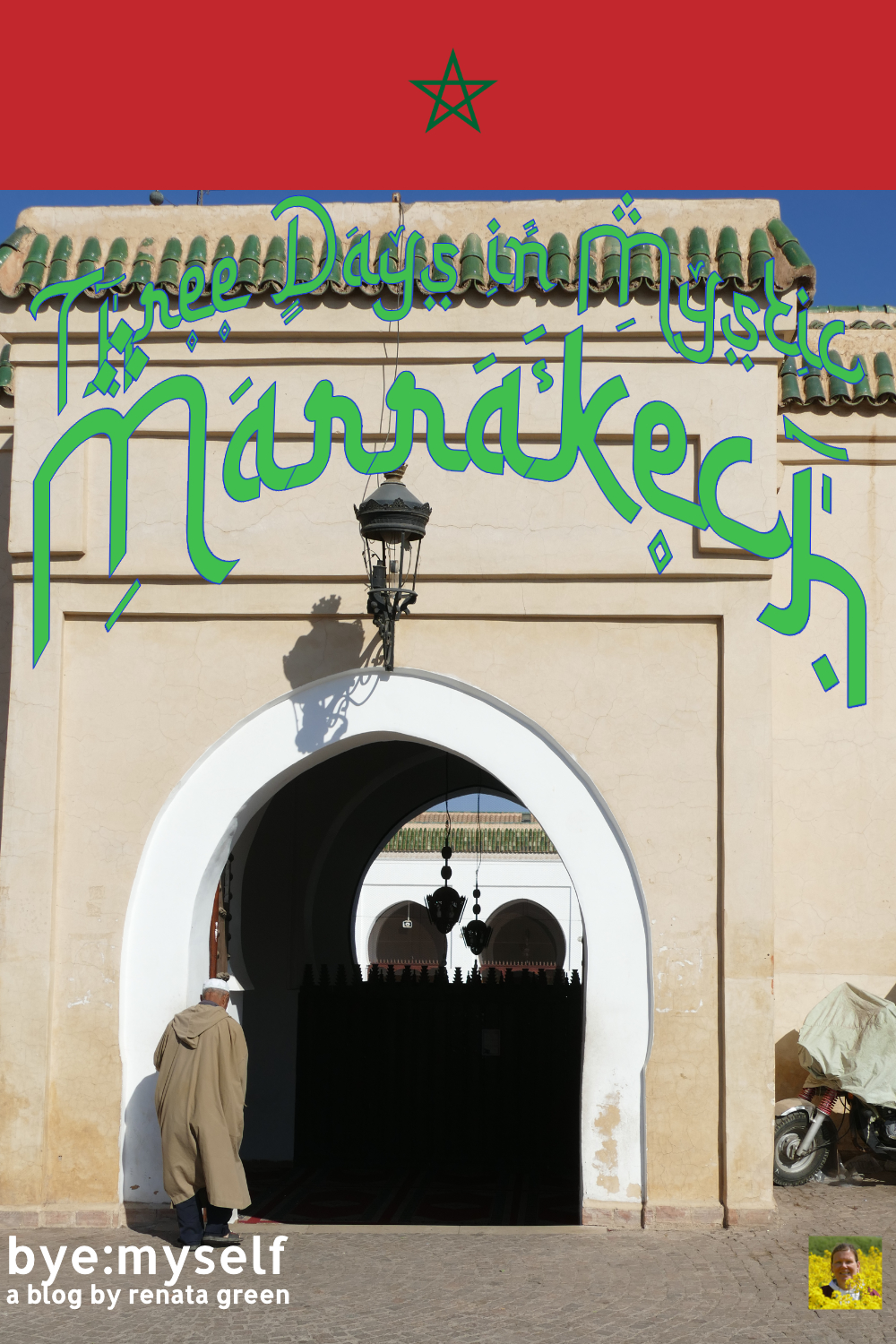
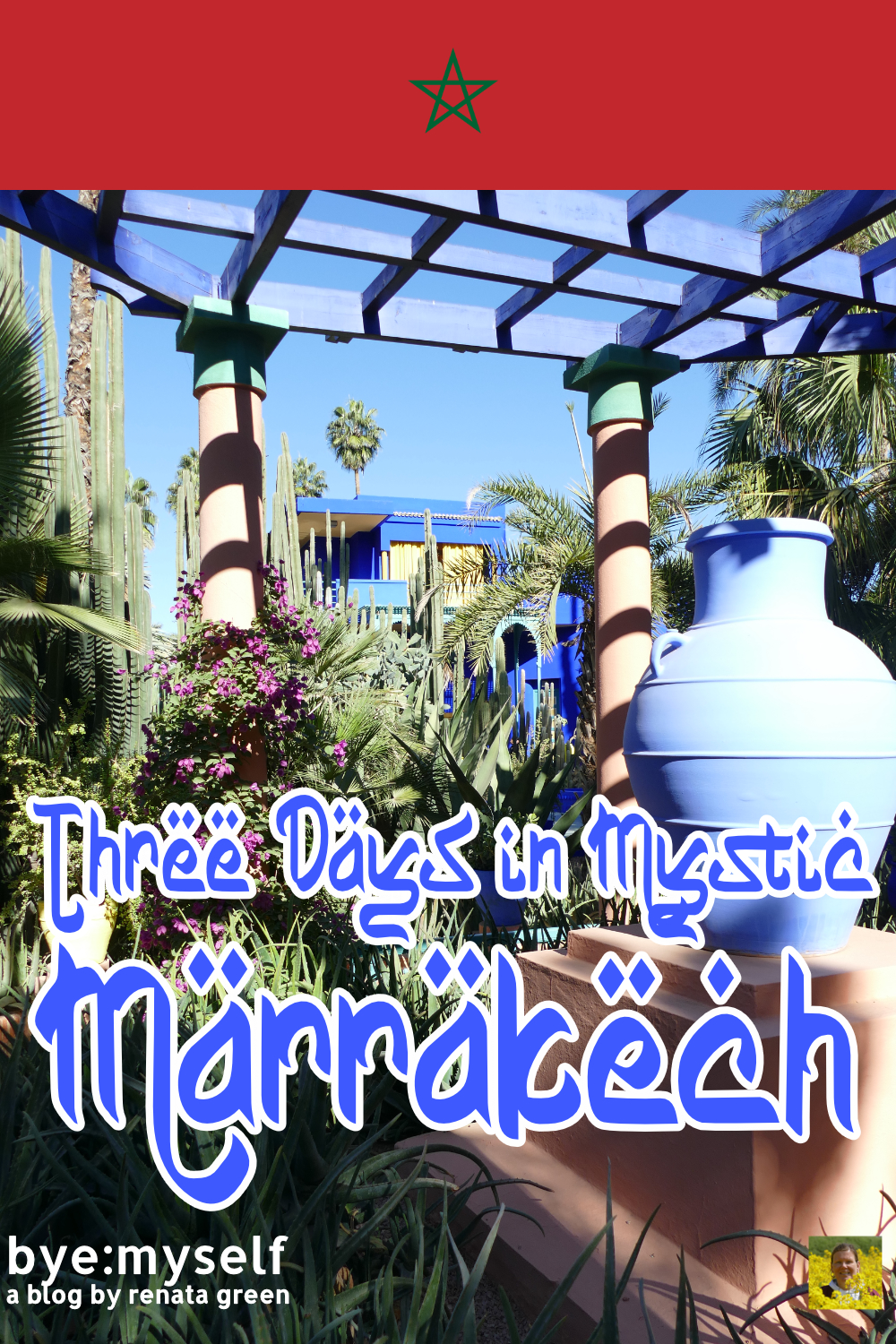
Note: This post is being regularly completed, edited, and updated – last in July 2025.
Did You Enjoy This Post? Then You Might Also Like These:
JIDAR Street Art Festival – How Rabat Celebrates International Urban Art
Guide to BRAVA, Cape Verde ‘s Blooming Little Island
RABAT – two days in the grand capital of Morocco
Guide to FOGO, Cape Verde ‘s Most Varied Island
FEZ – two days in Morocco’s oldest imperial city
A Fantastical Visit to the Imperial Cities of Morocco
Solo Female Travel to Morocco – All Your Questions Answered
Guide to BOA VISTA, the World’s Most Attractive Heap of Sand
* This is an affiliate link. If you book through this page, not only do you get the best deal. I also get a small commission that helps me run this blog. Thank you so much for supporting me!

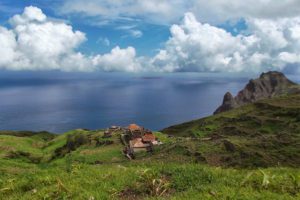

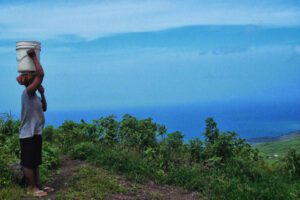
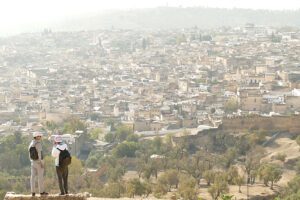
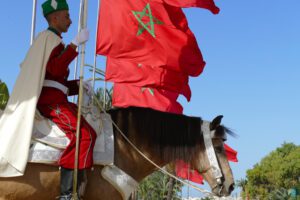


Lovely post about Marrakech! As always you managed to see a lot of places in only three days. We travelled in Morocco for three weeks years ago – and I recognized some of the buildings. However – Marrakech was a place I had really mixed feelings about. It was very touristy and pushy and I had the feeling of strolling through some movie probs sometimes. Pretty for sure – but somehow staged. I totally agree with you about the shopping in the supermarkets!
Yes, it certainly suffers from over-tourism. Even many Moroccans don’t like it since it’s so pushy 😉
We have only been to Tangier. Marrakech is so much bigger. So much more to see and do! Really gives the flavor of Arabian nights!
Marrakech has definitely been on my travel wish list for some time. I too have been worried about travelling there so good to know overall you did not have an issue. But I might still be worried wandering in alleys by myself. Even with all the great historical sights to find. I am really bad at haggling so will leave that to David in the souks. So many beautiful sights. Need to keep this on our list but maybe find a way to get a tour package booked.
I have always wanted to visit Marrakesh, it on top of my “wanna travel to” list. Your post makes me want to do it more and more. Wonderful guide and reasoning to push it forward
It is as exotic and enchanting as you’d expect it to be 😉
As I was looking at the pictures, I started first making a note to tell you which one(s) I loved the most and then stopped because they are all so beautiful in their own way. Some of the details and the beauty of the architecture reminded me of our visit to the Alhambra in Granada (and then I saw your mention of Granada :))
Bargaining is something we grow up doing as well in India though I never became good at it. I always feel bad bargaining with the vendors (my mom as well as my sister-in-law however are both pretty expert bargainers!!)…
And in case I never mentioned it earlier, I love how creative the name of your website is, and how detailed your travel posts are …
Thank you so, so much for your lovely comment and your very encouraging words 🙂 I deeply appreciate it 🙂
The detail of patterns in architecture is amazing. I would love to visit Marrakech one day!
Oh yes, the decor in Morocco is just incredible! 🙂